

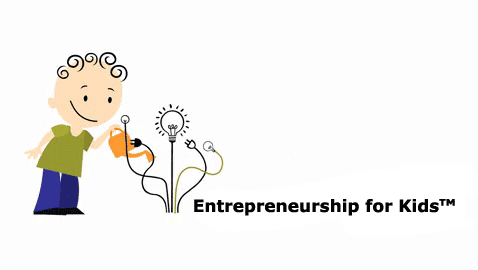
This "Kids initiate" page presents a collection of projects, inventions, and social initiatives of entrepreneurial students, children, and youth who have brought their ideas to life.
More ventures are listed on the "More Children's Projects" page.
Many projects have been implemented within the framework of schools that conduct entrepreneurship education. Other ventures were set up by kids and young people who chose to share the story of their enterprise to inspire other children.
Entrepreneurial children who take entrepreneurship classes accompanied by the Entrepreneurship for Kids Program learn all the steps for establishing a venture, from concept to implementation. . This entrepreneurship process, in which the students take an active part, encourages each child to express their strengths, capabilities, skills, and interests.
During the program, the young entrepreneurs set up projects, accompanied by a facilitator/teacher/other school staff who serves as a mentor for the kids.
Nurturing a creative approach to problem-solving and developing entrepreneurial thinking occurs during a series of meetings in which students learn various aspects of entrepreneurship.
Watch the example regarding the subjects that one of the groups learned, where the students have raised ideas for ventures, prioritized them, carried out surveys, and tested their ability to develop and implement them.
The Biotechnology Venture: Reeform
The Young Entrepreneurs: Students of Tzvia High School Yeshiva in Eilat
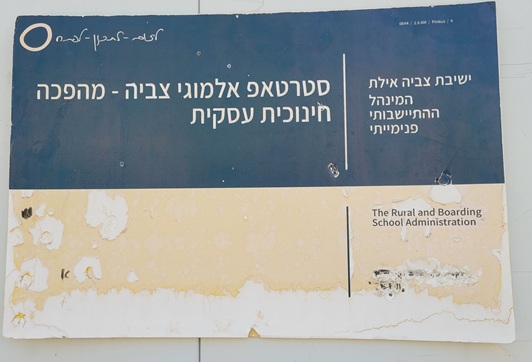
Students from the Tzvia High School Yeshiva in Eilat participated in a biotechnology entrepreneurship course.
The course, led by Galit Zamler, is a collaboration between the Seanovation - Innovation Center in Eilat and the biotechnology track instructors at Tzvia Yeshiva - Dr. Omer Polak and Dr. Itai Cohen.
During the course, students went through a process of developing biotechnology ventures with business feasibility.
The students worked in teams, came up with ideas for ventures, examined them, and each team focused on one idea that they developed.
At the end of the course, we held a meeting modeled after the TV show "Shark Tank," where students presented their ideas to a distinguished panel of judges.
The team that developed Reeform won entry to Seanovation's accelerator and mentorship worth thousands of shekels.
The team's idea is based on growing corals in the laboratory and using these corals creatively in the luxury market.
At this stage, we are not revealing the idea itself, and later, when the venture goes to market, we will be happy to write about it here.
In the photos, you can see that the students are already engaged in controlled coral cultivation.
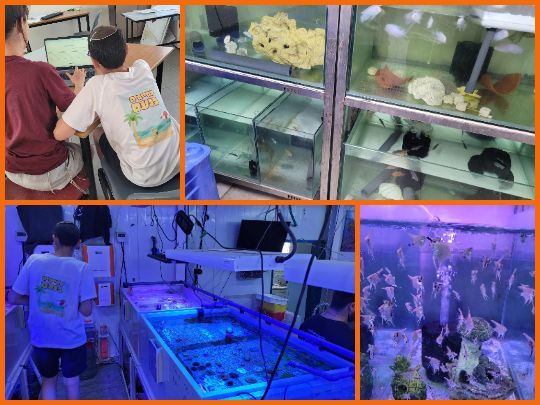
The Social-Environmental Project: Life Among the Trees
The Entrepreneurial Girls: Students of the Ulpana Amit Lehavah in Kdumim
Students from the Ulpana Amit Lehavah in Kdumim are taking part in the Youth Entrepreneurship Program led by teacher Yael Shapira.
Encouraged by their teacher, the girls competed in the national hackathon 'Remembering the fallen, and standing by them.'
The students decided to focus on the need to commemorate the fallen of the wars of Israel and victims of actions of terrorism who had a connection to the Ulpana.
It turned out that for about 90% of the girls who attend the Ulpana, this subject hits close to home.
The girls held a survey and found out that bereaved families prefer a physical commemoration over a virtual one.
To combine the challenges of the hackathon with the need that arose in the community, the students decided on planting a grove of trees in memory of the fallen, which will also serve as an observation point with a nice studying corner, that will be used as a meeting spot and tutoring for the young generation.
The girls planted trees, with each dedicated to the memory of one fallen. Each tree has a QR barcode on it, which links to a website that tells the story of the fallen by his family and those who knew him.
The Kdumim Local Council has decided to embrace the "Life Among the Trees" project and turn the plaza next to the grove into a central spot in the settlement for holding Remembrance Day ceremonies.
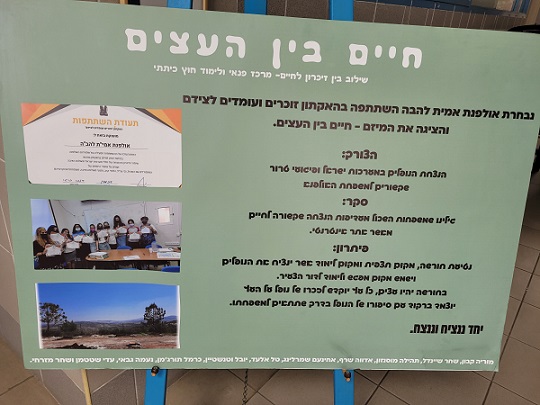
In the upcoming school year, all of the Ulpana students will learn different subjects related to the "Life Among the Trees" project. Below are few examples:
In Bible classes, the students will look for verses related to the names of the different trees planted at the grove.
In science classes, the students will explore the characteristics of each tree.
The ninth-grade students will contact the families of the fallen, tell them all about the different trees and their characteristics, and help them choose one tree that characterizes the fallen family member. This tree will be dedicated to his memory.
Within the 'field-nation-society' classes, the students will prepare a map of the observation point overlooking the area.
Within history classes, the girls will conduct interviews with senior families around the area (according to the map mentioned above) and build a story that tells the area's history firsthand.
Read also about the students' venture of building benches and a deck.
The Social Venture: Pajamas for children at risk
The Entrepreneurial Girls: Participants in the entrepreneurship course in Hong Kong
A 10-session entrepreneurship course in Hong Kong, based on the EFK program, has come to an end.
One entrepreneurial group worked on a social project of "Children for Children."
The young entrepreneurs designed and sewed two pajamas of onesie type, one for boys and one for girls, with the idea of distributing pajamas to children at risk and in distress, thinking that pajamas represent warmth, home, and love.
The kids intend to sell the pajamas in Hong Kong, and for every pajama sold, they will donate other pajamas to a child at risk.
In the photo: The entrepreneurial girls present their pajama project.
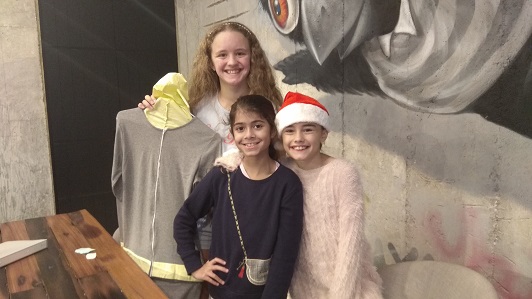
The Social Venture: A tent-like home
The Entrepreneurship Group: Participants in the entrepreneurship course in Hong Kong
This is another social project of the participants in the EFK course in Hong Kong, which they designed with lots of thinking and creativity.
The project strives to help solve the problem of homeless people. The young entrepreneurs, who are exposed daily to the cost-of-living and the number of homeless people in Hong Kong, have decided to create a tent that acts as a home for those who have no home.
The product, several times larger than a regular tent, includes additional accessories such as lighting, a mattress, and even a water storage container. This tent is folded into a bag.
The tent achieves four main requirements: comfortable, lightweight, affordable, and portable.
The children's vision is to distribute the tent to the homeless so that they can achieve a little privacy, warmth, and comfort.
The young entrepreneurs present a prototype of the tent:
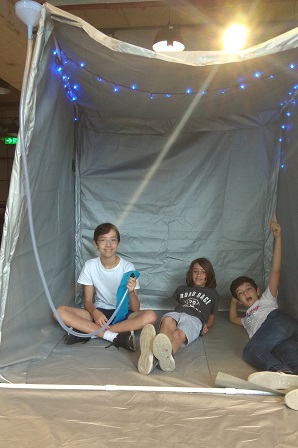
Entrepreneurial Seeds
The Entrepreneur Children: Students of the Sadot school in Pardes Hanna Karkur
The students of the Sadot school participate throughout the year in entrepreneurship classes, divided into different age groups.
The students, accompanied by their teachers, raise ideas for projects in various fields and then study the chosen subject and bring their ideas to life.
At the end of the year, a multi-participant event called "Seeds of Entrepreneurship" was held, presenting the students' entrepreneurial products.
The Social Initiative: Teach second-graders computer skills
The Social Entrepreneurs: Fifth and sixth class pupils in Hayovel school in Modi'in
At the Hayovel school in Modi'in, the kids have studied entrepreneurship classes under the management of Ronit Ravizada, based on Galit Zamler's entrepreneurship curriculum.
One of the mutual projects for pupils from the fifth and sixth grades was to teach second-grade students practical computer competencies.
Amit and Yael, fifth grade pupils, sum up their experience:
"One of the elective courses at school was 'entrepreneurship.' Eight kids from the fifth and sixth grades enrolled, and we were among them. The course's teacher is Ruti Shtark, and she has supported us once a week by helping us execute social projects.
In the beginning, we learned what entrepreneurship is and developed executable and practical ideas.
One of our thoughts was to teach second-graders computer competencies before they proceed to third grade.
The teachers chose five pupils from each class and divided us into pairs. Each pair mentored five pupils.
We held weekly meetings at a predetermined hour, where we received permission from our parents and the principal to be absent from our class.
We mentored the second graders for eight lessons using laptops. In the first lesson, we worked with them on fundamental tasks in Microsoft Word. In the following lessons, each pupil chose an animal and composed a presentation which included: What does it eat? Where does it live? And how does it reproduce? They added videos and pictures, discovered ample information on the animal, and learned how to use a computer. They learned how to compose presentations and integrate animations in a more fun and creative way within a small group.
In the last class, the second graders experienced a game with Kahoot, which they enjoyed and also learned new things.
We enjoyed teaching them things which, for us, seemed trivial. We liked this process and had fun with one another.
We learned that we have confidence, and we ended the initiative with a great sense of pride and satisfaction."
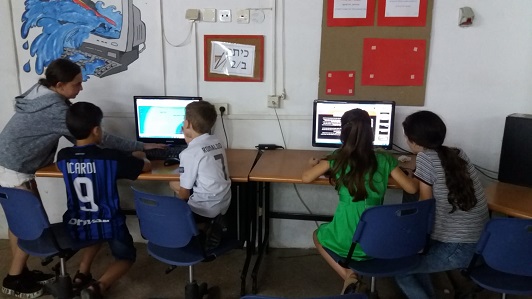
The Invention: "Corkcan"
The Young Inventors: Rinat, David, and Maayan, sixth graders at the Hayovel school in Ashdod.
Rinat, David, and Maayan took part in the entrepreneurship studies at the school, and, as a result of the classes, they came up with an idea called "Corkcan."
The invention is a wearable cork that prevents the drink from spilling and turns it into a reusable can. It helps the environment by reducing pollution.
They consider their probability of success as very high: "We are sixth graders, motivated, determined, and have a strong will to market our initiative. We have great experience in entrepreneurship, and we will never give up."{font}
The entrepreneurs had a few specified targets:
"Make the product popular among the Israeli population, diminish the level of pollution, bring positive change to our environment, develop teamwork, and improve our social involvement and capabilities."
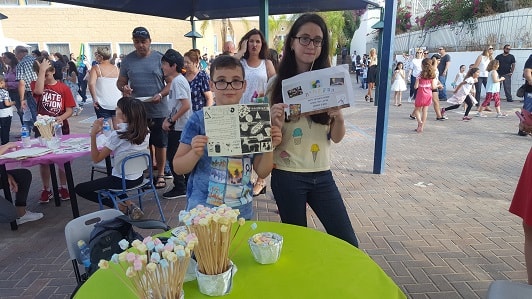
The Social Initiative: We are ready to read
The Girl Entrepreneurs: Sixth graders Maayan and Jasmine at the Hayovel school in Ashdod
Maayan and Jasmine focused on solving social problems. Once they identified one, they defined their purpose: "To help second-grade pupils to read in an enjoyable and good manner."
They chose to teach second-grade pupils in small groups of four to five.
They found a suitable target audience, and they were satisfied with their ability to give back to the community.
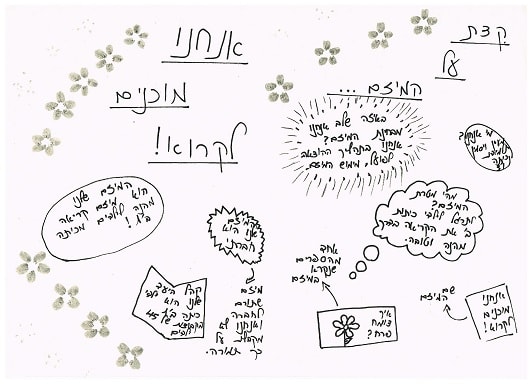
The Social Venture: Ball game tournaments
The Entrepreneurs: Maor, Linor, Racheli, Ilay, and Alle from the sixth grade at the Hayovel school in Ashdod
One of the social initiatives that were raised by the students studying entrepreneurship was to organize tournaments for third and fourth graders, which sixth graders will lead.
Most students love ball games, but to create interest and a different approach, they chose to host tournaments.
The proud entrepreneurs present their initiative to their parents and the community in a "pinnacle night" at school:

The Social Initiative: Purimatica (Purim & Math)
The Entrepreneurship Group: Sixth graders at the Hayovel school in Ashdod
Throughout the entrepreneurship classes at the Hayovel school, the children raised many ideas for ventures, inventions, and social initiatives to solve social problems.
One group combined the joy of the Purim holiday with mathematics studies.
The group prepared an activity named "Purimatica" to let children enjoy learning mathematics in a fun and humorous way.
The students spoke about their initiative in the 'Evening of Excellence,' which took place at the end of the school year.
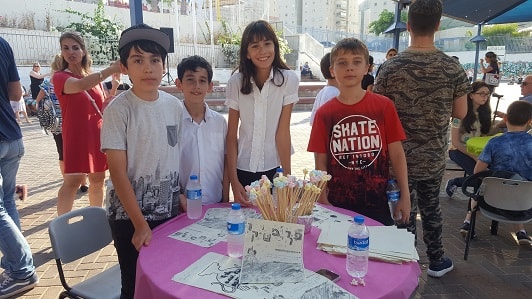
The Social Project: Cheer up children in the hospital
The Social Entrepreneurs: Sixth graders at the Hayovel school in Ashdod.
A group of sixth grade students at the Hayovel school designed and executed a plan intending to cheer up children in the regional hospital.
The students planned and organized various kinds of activities that they could do in the hospital. They also wrote greetings and wishes for good health.
The young entrepreneurs wanted sick children: "To have fun, feel like everyone else, feel like they are part of the society, and feel happiness and joy."
To fulfill the initiative, the children got help from one of their mothers, who works at the hospital. She organized a visit for them, and they executed the plan during this visit.
No wonder the students expressed satisfaction and pride in their project, which they presented to the community on a 'Record Day' at their school.

The Social Project: Lost and found basket
The Entrepreneurial Team: Evelin, Maria, Shai, and Guy from the sixth grade at the Hayovel school in Ashdod.
Sixth graders at the Hayovel school, managed by Pnina Weinstein, participated this year for the first time in entrepreneurship classes, during which they created inventions and initiated social projects.
This group of students put into practice a concept called "Lost and Found Basket." The idea stemmed from the needs of many students.
The students wrote this:
"The 'Lost and Found Basket' is meant to help children who have lost or forgotten their items and can't find them."
They described the concept like this: "Our initiative is a basket, which we put in lost items."
The students came up with this solution after thinking of various ways to help children in such a situation. They concluded that putting all lost items in one place will make them easier to find.
The students presented the concept in the "Entrepreneurial Area" at a record event.

The Social Project: A birthday for everyone
The Social Entrepreneurs: Sixth graders at the Hayovel school in Ashdod
The group defined the project's goals in this way:
"To cheer up every boy and girl at school on their birthday.
Teach the values of giving, caring, equality, teamwork, and collaboration."
The idea for the project was:
"We thought: how can we make many children happy?
Then we all decided that we would do a social project related to birthdays for all of the children at our school and call it: "A birthday to everyone!!"
The team members presented their initiative on the school's 'record day' at the end of the year.
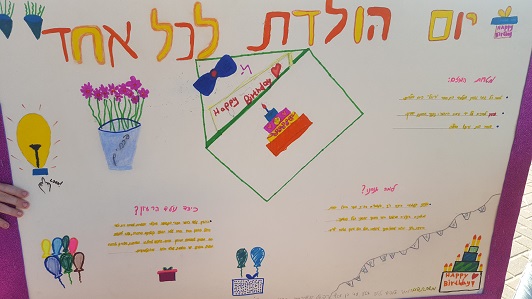
The Social Project: Mediation
The Social Entrepreneurs: Jessica, Oksana, Emily, Anastasia, and Alan, fifth grade students at the Be'eri school in Netanya
To encourage a positive atmosphere in the school, the entrepreneur students chose a project named "Mediation."
The project goal is to serve as an intermediary between students and prevent conflicts in the school.
The children planned the implementation of the initiative as follows:
"During each class break, the group members will help the teacher on duty host mediation between students in conflict.
We will give children who have a conflict a form to fill out, explaining their side of the conflict.
This form will help the mediators to understand the issue and come to conclusions."

The Social Project: Got Talent
The Community Entrepreneurs: Stav, Irwin, Lian, Natalie, and Yasmin, fifth graders at the Be'eri school in Netanya
Some of the fifth graders at the Be'eri school wished to discover talents and strengths among their peers.
To do this, the students came up with the "Got Talent" project and described it this way:
"Once a month, we will hold a talent competition for all students in the Be'eri school.
The project members will sit on the committee and choose the most prominent talents.
We will choose three finalists from each tier. In the final, there will be eighteen students who will compete for the first, second, and third place and win prizes."
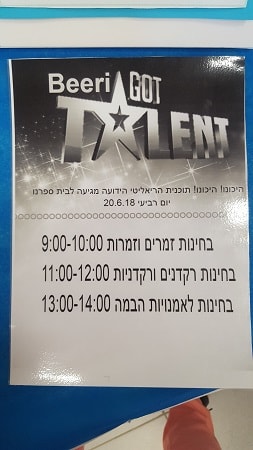
The Social Project: A Different Friday
The Social Entrepreneurship Group: Yonatan, Elad, Shanel, and Nahorai, fifth graders at the Be'eri school in Netanya
Fifth graders at the Be'eri school came up with an idea for a social project during the entrepreneurship classes they took over the year.
This entrepreneurial group's goal was to bring fun and enjoyment to school students.
They named the project "A Different Friday," and they explained it this way:
"Once a month, we will hold an active recess. During the recess, we will operate several stations, such as coloring, painting, basketball, juggling, and syncope."
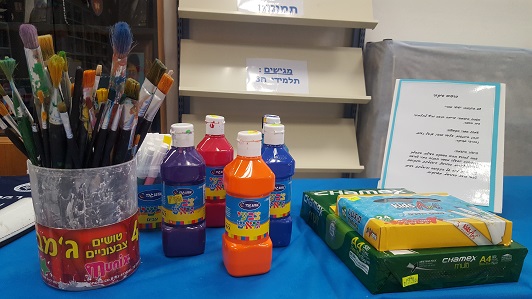
The Social Project: A Class Picnic
The Child Entrepreneurs: Ilan, Ilia, Sabina, Alona, and Mika, fifth grade students at the Be'eri school in Netanya
Participating in the entrepreneurship classes stimulated the students to improve their social environment.
This group chose to initiate a class picnic. Students explained the project as follows:
"Every class will hold a school picnic once a month in the schoolyard. At the picnic, they will bring delicious groceries and experience a variety of fun-forming activities. The required equipment: a basket, groceries, and activities."
The students organized a basket with a collection of picnic activities.

The Social Project: Soccer Tournament
The Group of Social Entrepreneurs: Yashiv, Bar, Eden, Yonatan Vana, and Michael Verint, fifth graders at the Be'eri school in Netanya
The students in the entrepreneurship course thought about the need to bring together students from different schools.
The idea was to do so through healthy sports.
The entrepreneurs of the group defined the project as follows:
"Fifth and Sixth graders will both hold a football tournament separately. Then, the two winning classes, one from the fifth grade and the other from the sixth grade, will reach the finals and compete with each other. The winning class will win a prize."
Students went on to explain the following:
"The equipment needed for the project includes a soccer ball, soccer goals, goalkeeper gloves, safety gear such as knee protectors, matching shirts, and a whistle."
The students organized items to illustrate the required equipment:
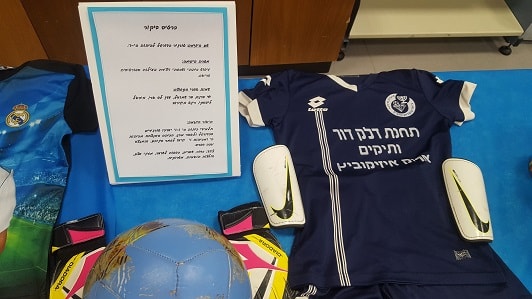
The Social Venture: Dodgeball Tournament
The Social Entrepreneurs: Ofir, Yaakov, Nehorai, Vicky, Arel, and Yakir, students in the fifth grade at the Be'eri school in Netanya
fifth grade students who participated in the entrepreneurship classes focused primarily on solving social problems.
The initiative of this group is to hold a dodgeball tournament between different schools in the city of Netanya.
The students explained how the idea was born and its advantages:
"We thought of encouraging a dodgeball tournament, mainly because it's a friendly game.
We all know that sports are essential for maintaining a healthy lifestyle.
By encouraging Dodgeball, we see a solution to the obesity problem, because playing sports helps with weight loss.
Additionally, we know that sports help people cope with anger and other difficulties.
Playing sports will likely help students become calmer."
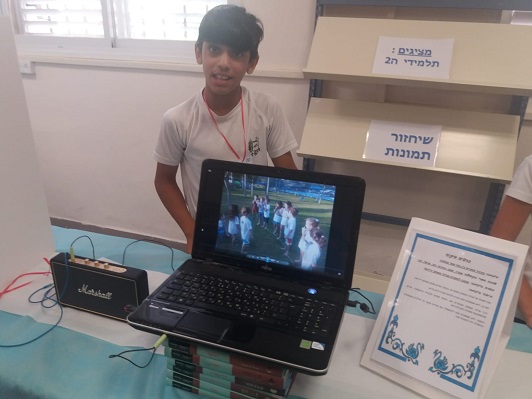
The Initiative: Documentation of Good Deeds
The Group of Entrepreneurs: Daniella, Tal, Leroy, Dudu, and Lital fifth graders at the Be'eri school in Netanya
As part of the school's entrepreneurship classes, students from the fifth grade at Be'eri school initiated a project to encourage community contribution by documenting good deeds.
The students named the project "It Does Good to be at the Be'eri School" and described it this way:
"Contributing to the community is very important for us. That's why we thought about what we could do to encourage awareness of the subject.
We decided to use the power of the internet and contacted the school's webmaster and asked her to build a unique page for reporting good deeds on the school website.
Besides, via that same page, people will be able to contact us with requests for help, and we will monitor the page and see how we can help them."
The students designed an icon to immortalize the good deeds surrounding them and help inspire others to be active.
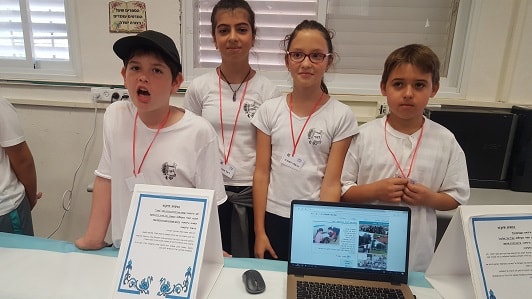
The Invention: Personal smoke vacuums
The Inventive children: Fifth graders, Ben, Shawn, Guy, Netanel, Or, and Ilay from Be'eri school in Netanya
Throughout the entrepreneurship program, members of this group had an idea to assist people who don't smoke and are among people who do smoke.
The student described their solution to the problem as follows:
"People smoke, and unfortunately, that is a fact! We care about the environment, so we wanted to invent something that would help people preserve the environment and have a better quality of life.
We invented a personal smoke vacuums that reduces passive smoke.
The device seemed complicated to carry in the initial phase, so at this stage, we recommend marketing the invention to restaurants and public places."

The Social Project: Health bars
The Entrepreneurial Girls: Emily Pat, Melanie, Polina, and Aya, fifth grade students at Be'eri school in Netanya
The combination of entrepreneurship lessons at school and awareness of the importance of a healthy diet for children pushed this group of entrepreneurs to invent healthy snack bars made up of flavors that children love.
The girls described their project this way:
"We have seen the importance of nutrition for children nowadays.
So, we wanted to invent a healthy snack in different flavors that children love.
We seasoned them with different spices that children would enjoy.
Also vital, these snacks have no preservatives."
After many experiments with different spices, the girls were able to prepare some tasty and healthy snacks.
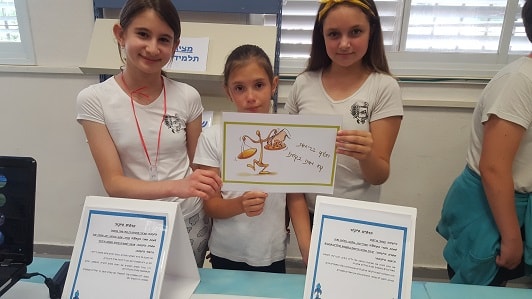
The Invention: My light - Light Up Pillow
The Young Inventors Group: Fifth graders, Aviv Naim, Aviv Guetta, Yair, Yuval, and Idan at Be'eri school in Netanya
The students learned to identify needs and think about ideas for solutions in their annual entrepreneurship course at school.
The group members identified the need for children to sleep with a light so that they can see in the darkroom.
The students defined the project this way:
"The goal of the project is to spread light in a room when it is dark.
The pillow will have lights inside. When the lights are pressed, they turn on and light up the room, so you can read a book or play when you are in bed."
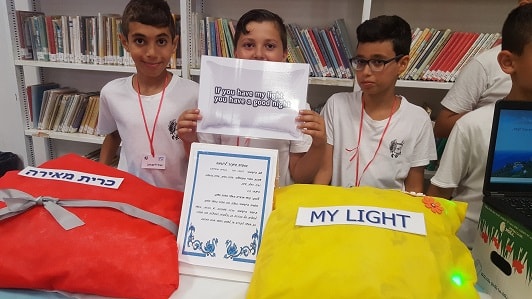
The Project: Learning with Fun
The Initiative Group: Ilai, Sagi, Maxim, and Eliran, members of the fifth grade at Be'eri school in Netanya
The entrepreneurship tutorials at the school encouraged the students to initiate projects that meet their needs.
This entrepreneurial team identified a difficulty in learning the English language and thought of an experiential and fun way to learn English through a computer game.
The goal of the project is to learn English by using a computer game called "Minecraft."
The boy entrepreneurs described the project this way:
"By using Minecraft, you can learn about different subjects.
During the game, there are many checkpoints with questions.
Every correct answer moves the child to the next stage."
The children checked and found that girls also play Minecraft, which means that the game could help girls learn English as well.

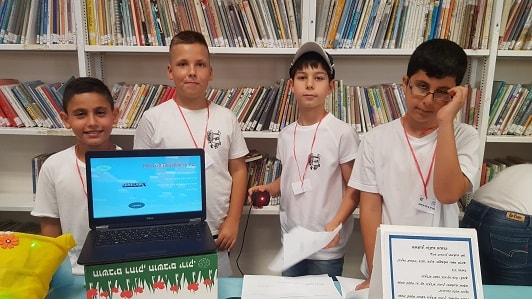
The girls Alice and Emily from the fifth grade also initiated a similar game that they named "World Fight." They planned a fighting and building game that would combine enjoyment and learning English.
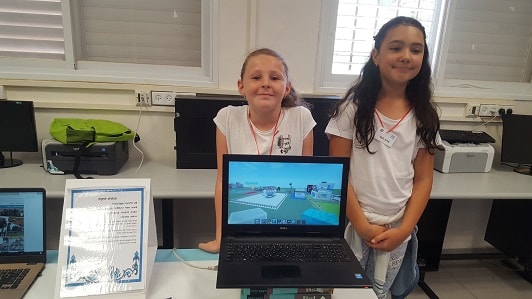
The Invention: Personal Bin
The Inventor Girls: Elisa, Michal, Avia, Adian, and Shoval, fifth graders at Be'eri school in Netanya
The entrepreneurship sessions at the school taught the students to observe their surroundings, identify needs, and think about solutions and answers accordingly.
This group of members identified the need to prevent children from getting up during class to throw away waste.
This is how the idea of a personal garbage can for every student was born.
The project description, according to the girls:
"A personal garbage can that is pinned by a magnet to the student's table.
A student can throw his/her trash in the garbage without standing up during class."
The students prepared some prototypes for the project:
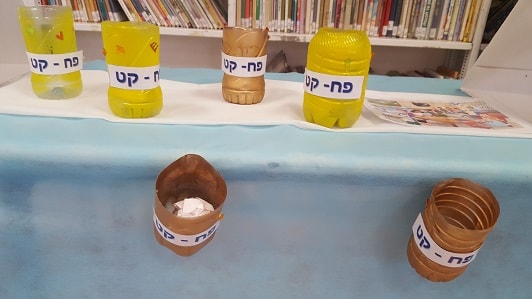
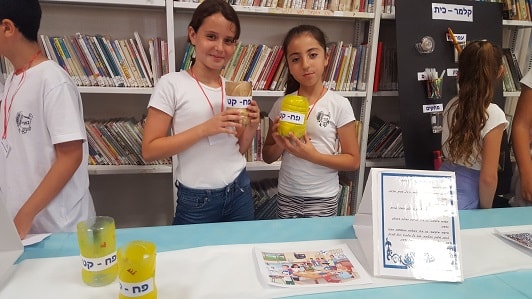
The Product: Classroom Pencil Case
The Entrepreneurial Girls: Aviv, Victoria, and Orian, students from the fifth grade class at Be'eri school in Netanya
Students from the fifth grade learned about entrepreneurship and decided to initiate their project. They wanted to create a classroom pencil case.
The students wanted to avoid a lack of writing tools and equipment during the school day, so they initiated the project to address this need.
The goal of the project is to enable students who lack stationery equipment to use the kit in the classroom.
The students described the project by saying:
"On the wall, there will be a kit with pencils, markers, erasers, glues, etc. If a student forgets their pencil case or lacks a particular item, they can reach into the 'classroom pencil case' and take what they lack. Once they're done using it, they can and should return it to its place".
The need for a classroom kit has risen in many schools. In some, the prototype became a real product and was placed in classrooms for the benefit of the students.
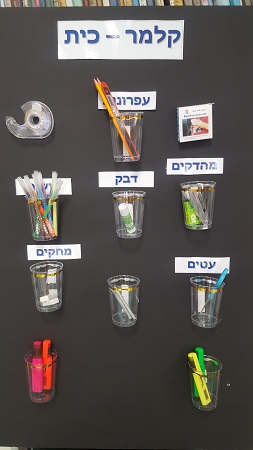
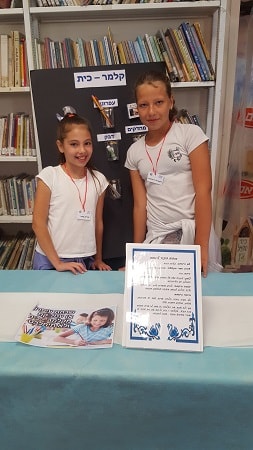
The Invention: Coatbrella - a Coat and an Umbrella
The Young Inventors: Shoham, Maya, Stav, and Talia, students in the fifth grade at the Be'eri school in Netanya
The Initiative Group: Children aged 10-13 who participate in the entrepreneurship course in China
During a year-long entrepreneurship course, the girls came up with the idea that resulted from the need to protect the entire body from the rain.
"Our umbrella combines a coat and an umbrella that are interconnected with plastic sheets. When it rains, the Coatbrella protects the head and the entire body from the rain. This way, children or other people using it won't get wet," the children explained.
The Coatbrella invention prototype:
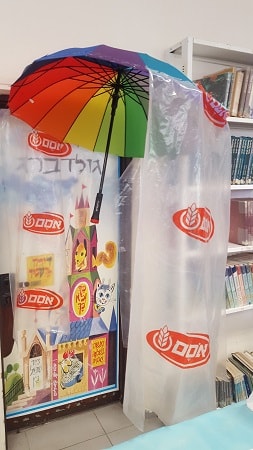
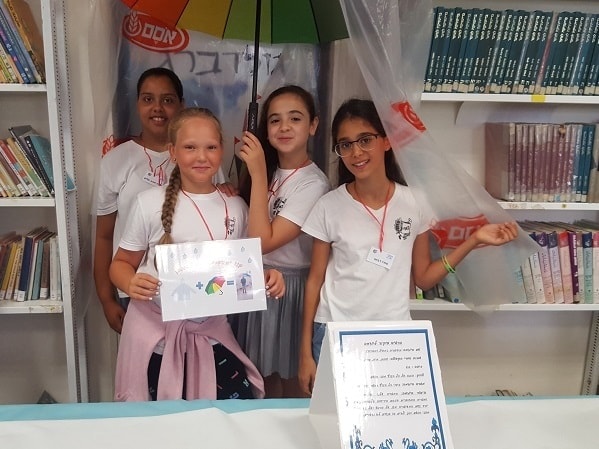
Students in China who took part in the EFK Program developed a very similar project.
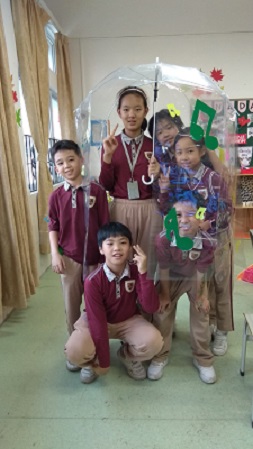
The children who participate in the entrepreneurship course in the Language School in China conceived an idea that stemmed from their and their friends' needs.
The young entrepreneur group aspired to find a solution to the problem we all face in the winter, which is getting wet even when we walk with an umbrella.
The children designed a unique umbrella with nylon straps that are removable or attachable per the user's request.
The Environmental Project: Recycling Wizard
The Environmental Entrepreneurs: David, Leon, Adam, Tal, Orel Okashi, and Orel Abed, fifth grade students at the Be'eri school in Netanya
Fifth graders participate in an entrepreneurship course and learned what defines an entrepreneur. What motivates people to be entrepreneurs? How are ideas born? About the entrepreneurial process, and more.
Throughout the process, the children brainstormed ideas for initiatives and chose to implement a new initiative named "The recycling wizard."
The goal of the initiative was to encourage people to recycle waste easily at home.
The children built a model of a garbage bin divided into four different compartments for recycling.
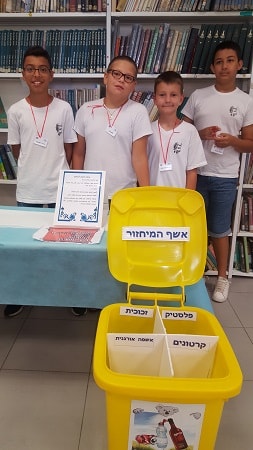
The Social Venture: Circles of Friendship
The Social Entrepreneurs: Fifth and Sixth graders at the Bechor Levi school in Rehovot
A group of fifth and sixth graders, led by teacher Mali Ben Simhon, initiated, designed, and implemented a social project.
They called the project Circles of Friendship, which aims to help school children who find themselves without friends during breaks express their desire to play with others.
The goal of this project is to help everyone enjoy school and have fun.
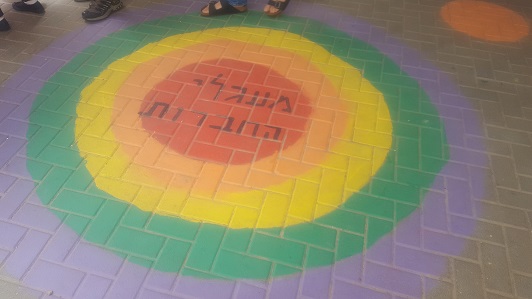
Projects in the Invitation to Invention Course
The Creative Children: Students from the Bechor Levi school in Rehovot
The Bechor Levi school in Rehovot conducts annual elective courses at the "Academon Chick" framework.
One of the courses offered to students was called "Invitation to the Invention."
Two groups of students took the course: a group of third to fourth-graders under the guidance of the teacher, Rivka Cohen, and a group of fifth and sixth-graders under the leadership of the teacher, Mali Ben Simhon.
In both groups, students developed ideas for inventions, based on the needs they identified.
The inventions of the older group:
The Idea of Gilad Zaidelson
"Dry Tin"- recycling cans that will be placed in the classroom to make it easy for school students to recycle.
It is a tin that is divided in the middle to allow both plastic and paper recycling.
Gilad said that the idea was born after he noticed the trash can in the classroom and realized that the students were throwing all the garbage into it without first sorting it out.
The goal of the project is to reduce environmental pollution and enable the recycling of plastic and paper products.

The Idea of Liat Ofek
"Warm Cup" - a glass that can heat drinks, and that is battery-powered.
Liat said that the idea was born like this:
"Mom told me that when she makes a cup of coffee in the morning, it often takes 45 minutes before she gets to drink it, and by then, her coffee is already getting cold, which makes it no fun to drink anymore.
That's why I decided to help my mom have fun drinking her coffee hot."
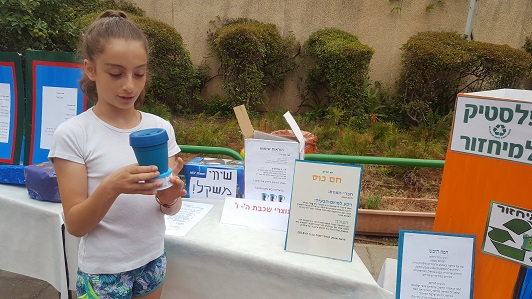
The Idea of Tamar Shoval and Meital Lahav Petolsky
"Kfafme'il" - gloves that are attached to hooded jackets or coats, so we will never lose them.
The entrepreneurial girls said:
"Do you sometimes rush somewhere in the winter and forget your gloves or misplace them, causing your hands to get cold?.
Isn't it true that sometimes you look for a pair of gloves and find only one?
We thought to solve the problem by using a 'Kfafme'il.'
The 'Kfafme'il' is a hoodie/jacket with gloves with an inner pocket.
When necessary, you can take the gloves out, use them, and then return them to the pocket.
The gloves will be attached with hook-and-loop fasteners, which means they will not get lost."

The Idea of Maor Oronov
Balance - a challenging game for children who love to play with cars with a remote control.
Maor said this about how the idea was born:
"I thought about the idea when I was with my father in a car. I suddenly thought that it would be interesting to prepare a challenging and different game for children who like to play with a remote-controlled car. I decided that there would be a box on the back of the car."
The car would have to go through an obstacle course with cones. Every time the car managed to get along the route, it would get a cube loaded on its roof, making the task increasingly difficult. The goal is to cross the runway with more than ten cubes on the roof without letting them fall".

The Inventions of the Young Group
The Idea of Omar and Shay-Li
A Robot that puts on makeup - A container with buttons and hands. On each button, the name of the makeup product is written, and when you click on one of the buttons, hands come out and put on the makeup product you pressed. So, the robot saves you time.
The idea was born after the children noticed that their mother was dressing up quickly, but wasting time searching for certain makeup products.

The Idea of Nitzan, Nir, Daniel, Idan, and Eyal
Driving course for children and teenagers
The children agree that young people should prepare for driving tests. But they thought there was a need to reduce the costs of driving lessons and shorten the number of lessons.
Their solution was a driving preparation course accompanied by theoretical and practical knowledge. In this course, each young person will participate in classes on traffic signs and structure, and then learns with a driving instructor in a closed area for his/her first few driving lessons.
The children presented their project to the parents, who were interested and impressed by the model.
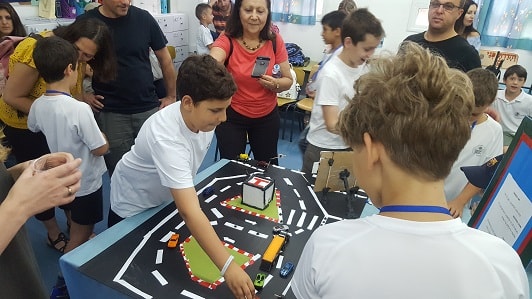
The Idea of Tal and Leon
School cafeteria - so far, several schools have raised the idea of establishing a cafeteria for children, including the Bechor Levi school.
The students who came up with the idea explained it by saying the following:
"We discovered that there are students who come to school without a meal.
Furthermore, some children do not have enough food, so we thought of establishing a cafeteria where we would sell sandwiches and healthy snacks at discounted prices.
The cafeteria will allow students to rejoice and eat during recess.
We will open the cafeteria during recesses, and it will be located at the entrance to the school.
Children from the school will donate the food for the cafeteria, and the money collected will be used to buy supplies for making sandwiches and healthy snacks."
The kid entrepreneurs present their idea to parents on a record day:
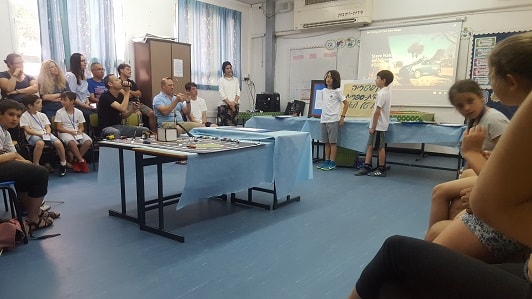
The Social Project of Noga and Shai
Without Violence - an initiative aimed at preventing violence in schools.
The socially geared entrepreneurs prepared a model of the project, composed of a radio and a red flag.
When students experience violence or witness violence toward other students, they press a button on the radio connected to the teachers' room and immediately call a teacher to the scene.
The entrepreneurs also thought of the cases where radios will not work for a particular reason. They prepared a red flag, which the student would raise, and the teacher on duty would then immediately come to the scene.
At the end of the year, the students presented the project to their parents and explained that it meets the students' need for a safe environment.
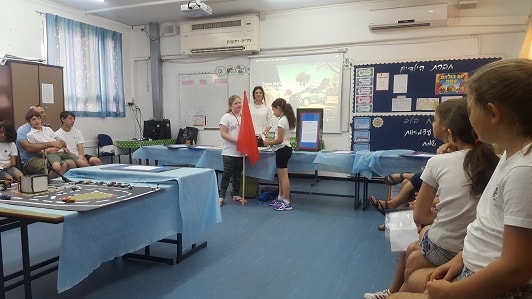
The Invention of Melissa, Yarden, and Neta
The children explained the idea:
"The invention is an iPad for people who can't speak, so it enables them to communicate with others.
People with disabilities use the iPad and its keyboard to type what they want to say. Then they click 'Speak' or 'Delete.'
If they click 'Speak,' the iPad says the written words.
If someone writes curses, then the iPad deletes them immediately."
The students presented the idea, and it became popular.

The Idea of Gil and Jeremy
Personal Locker - Each student will have a private locker under the desk.
Students in many schools raise the need for a private personal locker as part of the desk.
Gil and Liam explained the need:
"We noticed that when we need to get things out of drawers, children push each other.
Sometimes books and notebooks fall into other boxes, so we decided to promote a venture that would solve the problem:
Each student will have a private locker under the desk to get organized faster, and the equipment will not get lost."
The young entrepreneurs Gil and Liram:
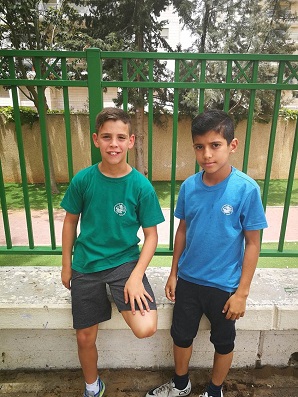
The Invention of Roy, Eli, and Noam
Electric Library - Books come to you at the click of a button.
The young entrepreneurs shared with their parents that at first, they thought of another idea:
They were thinking of beds on the floor. When you clicked a sign, you could make it go up or down. But the children found it challenging to build a model of the project, and therefore, thought of a similar idea for books.
From their experience, it takes time to find a book in the library, and there is no maximum utilization of the library space because the shelves are only as high as you can reach them. But, according to their invention, the library will have more shelves because the computer will make the book selection at the click of a button. Robotic hands will then reach the right shelf, pull out the chosen book, and bring it to you.
Their invention will save time and space.

The Invention of Itai, Yali, and Shai
The Pencil Writer - Fast, effortless writing
The children explained how they thought about the invention:
"We discovered there are children with difficulty writing quickly in classes and when doing homework, so we thought about developing a product that would help children write faster."
The young inventors present their invention:
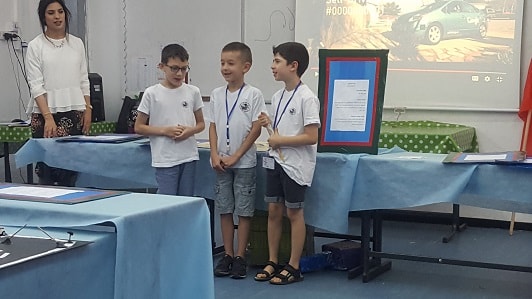
Student Inventions for Problem Solving
The Future Entrepreneurs: Students at the HaMagenim school in Kiryat Shmona
The HaMagenim school in Kiryat Shmona, under the direction of Sarit Ohana and led by Batia Amar, fosters creative thinking and encourages its students to solve problems while researching and using technology.
This video sums up the school's activities:
Social Initiatives of Children
The Social Entrepreneurs: Students at the Tlamim school in Be'er Ya'akov
The students of the Tlamim school in Be'er Ya'akov, under the direction of Limor Shantman, planned and implemented some social initiatives that appear in this presentation:
The Invention: Tu Bishvat Tree
The Creative Children: Students of the Begin school in Kiryat Motzkin
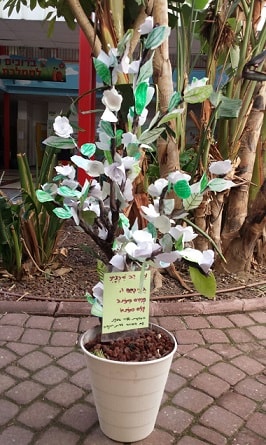
Pupils at the Begin school study with teacher Dorit Chondia. They participated in a project to mark Tu Bishvat, the trees' new year. The children prepared a tree from recycled materials, according to their design.
The sixth graders prepared the tree trunk after studying, experimenting, making mistakes, improving, and finally succeeding.
The second graders prepared the flowers, made from paper. The first-graders made the leaves by using the extraction method (put a leaf under a page and color the page with Panda dyes to get the shape of the leaf).
The parts of the tree were assembled with the assistance of the school's maintenance personnel.
All the students were involved and interested, enjoyed the experience that challenged some of them, and were very satisfied with their success.
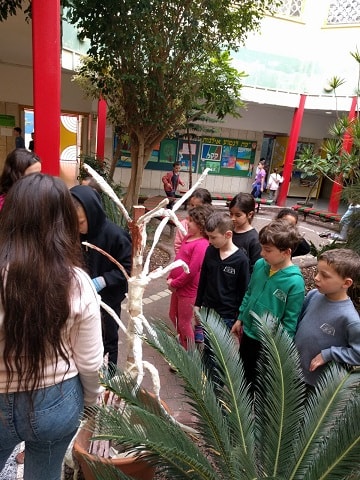
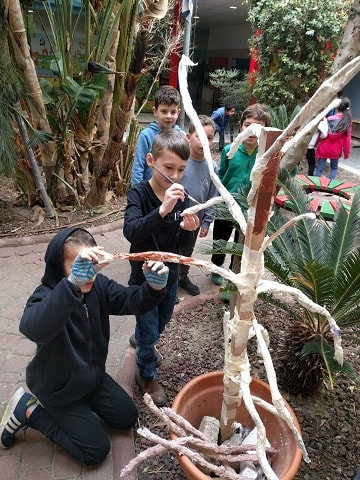
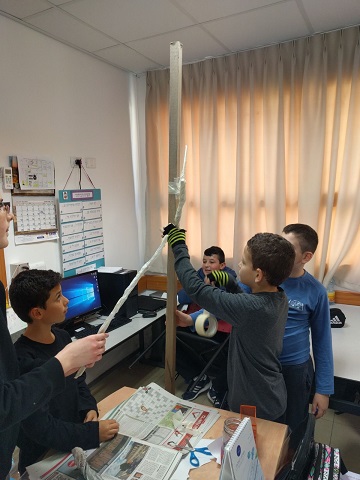
The Invention: Gift for Pensioners
The Initiator Group: Fourth graders at the Hatzevi Israel school in Kiryat Ata
fourth grade students at the Hatzevi Israel school, run by Yifat Peretz, participated in entrepreneurship sessions aimed at social entrepreneurship.
Teacher Iris Dahan, who guides the students, states:
"Our project began on Hanukkah - in cooperation with the Pensioners of Yad Labanim, and continued by making flower pots from recycled boxes for Tu Bishvat.
At the planning stage, the students sat in groups and came up with ideas about what to do and how, and we created the flower pots according to those plans.
Tomorrow we will visit the Pensioners' Club for additional activities with them in honor of Tu Bishvat."
The Invention: Concentration Notebook
The Entrepreneurial Kids: Fourth graders at the Yitzhak Shamir school in Holon
May, Rotem, and Neta, from grade four, identify those who have difficulties concentrating during classes.
They understood that the spinners meet the needs of some students, but also disturb the teachers because of the noise.
Therefore, they decided to enhance the spinners and invented the "concentration notebook." This notebook comes with a quiet, colorful vane that the students can spin without any noise and still concentrate on the lesson, as well as without disturbing the teachers.
See more ideas for projects of fourth graders from the Yitzhak Shamir school in Holon.
The Venture: Eraser with Markers
The Young Student Entrepreneurs: Fifth graders at the A.D. Gordon school in Kfar Saba
The idea for the product is a set of whiteboard markers attached to an eraser for use on the board.
The slogan of the students to the invention: "Write lightly, and erase effectively!"
The kid entrepreneurs explain the advantages of the product: "The product is large and, therefore, easy to find when it is lost. The product is easy to grasp and causes writing and erasing to be fun."
The student entrepreneurs prepared a model of the product and presented it in class:
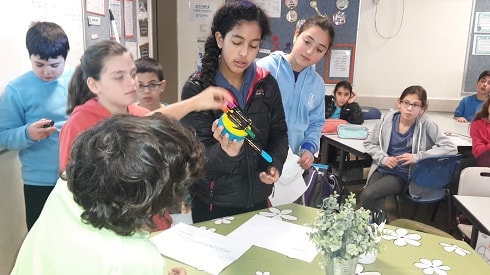
In preparation for the Entrepreneurs Convention held at the end of the school year, the students made several units of the product. They introduced them to the participants at the convention.
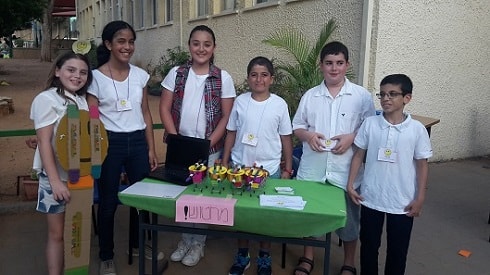
The Students' Venture: Eye Book
The Young People Entrepreneurs: Fifth graders at the A.D Gordon school in Kfar Saba
Eye Book is a handheld digital device with motion sensors that independently turn pages in the direction of reading.
The young entrepreneurs Liri, Yael, Shisal, Uri, Oz, and Nicole formulated a slogan for the gadget: "Just take a look, and it will happen!!!"
The entrepreneurial children explain how the idea for the gadget was born:
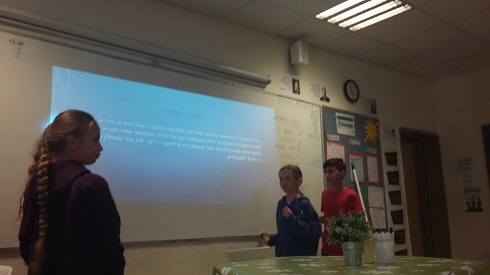
"You must know the feeling - it's cold, you are going to bed, and want to read a book. You cover yourself with a warm blanket, but it is too cold to reach out and turn the pages in your book!
So we've come up with a solution for you:
A regular book, with a pin on it, with motion sensors (eyes) that turn pages independently.
The device can be moved between books."
In the picture, the students are proud to present their idea to the Entrepreneurs Convention attendees, organized at the end of the school year:
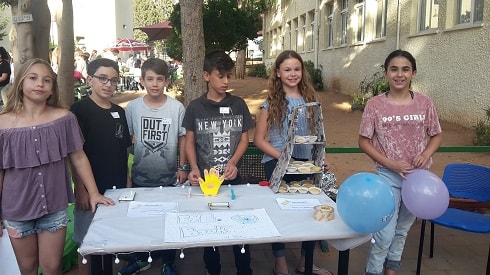
The Initiative: Box Friend
The Student Entrepreneurs: fifth grade students at the A.D. Gordon school in Kfar Saba
Uri, Ohad, Omer, Yonatan, Tal, and Eyal thought of a box used to solve fights. The box records our experiences and presents them to remind us of what is positive about the person with whom we fight.
The entrepreneurs present their idea to Box Friend:
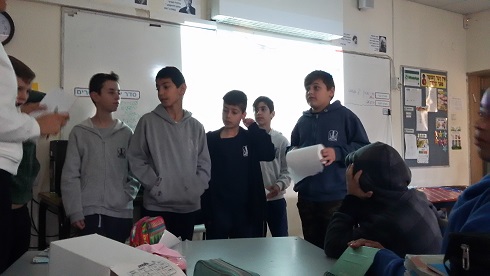
At the conference, the students presented a model of the box:
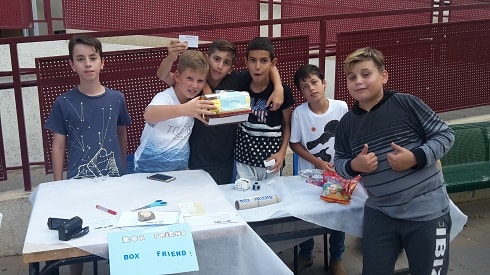
The Project: Mix an Environmentally Friendly Car
The Young Member Entrepreneurs: fifth grade students at the A.D. Gordon school in Kfar Saba
Mix - An eco-friendly car that combines electric and solar technology. Rotem, Maya, Dana, Arik, and Tal, whose slogan is "Think green, go far."
The car's advantages: It is powered by solar energy and electricity, thus saving air pollution and other pollution caused by the use of vehicles driven by oil. The car offers a better user experience by saving money and providing environmental benefits from reducing air pollution.
The young entrepreneurs expect that the car will be cheaper than other electric vehicles.
The young entrepreneurs prepared a three-dimensional computerized model of the solar car:
Mix's creative team at the school's Entrepreneurs Convention:
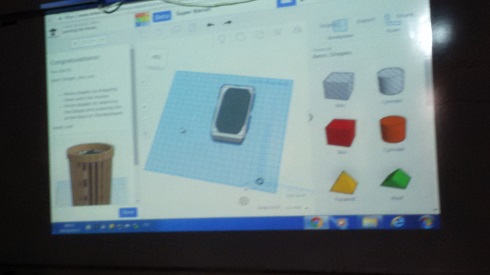

The Venture: Chocolon - A Waffle of Ice Cream with Chocolate
The Pupil Entrepreneurs:: Fifth graders at the A.D Gordon school in Kfar Saba
The pupil entrepreneurs Yuval, Sagi, Assif, Uri, Liam, Lior, and Gilad thought of an idea and put it into action: Chocolon - A waffle of Tilon with chocolate in various flavors.
The children explained to their classmates the uniqueness of the product, who the target audience is, and how they intend to succeed in realizing it.
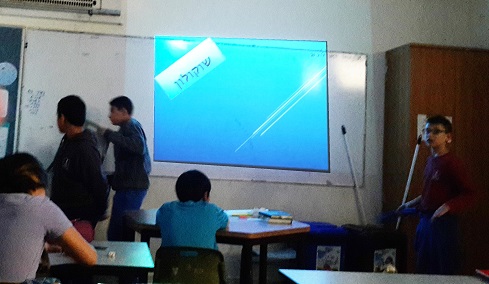
Their classmates encouraged them and loved the idea.
To persuade parents to invest in their idea, the students distributed the chocolate waffles at a booth at the Entrepreneurs Conference.
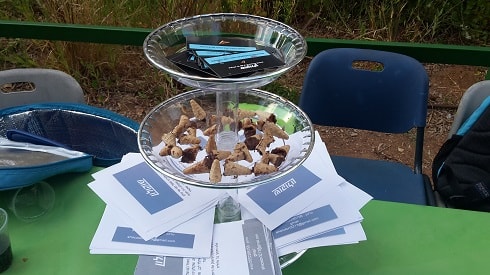
The entrepreneurial team of "Chocolon":
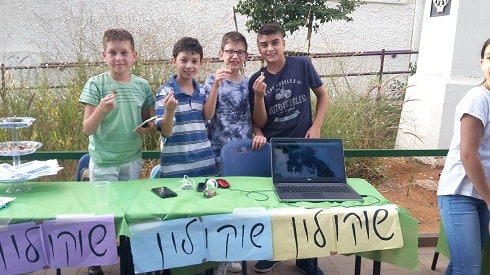
The Invention of the Young Students: I CUP - A Personal and Portable Refrigerator
The Child Entrepreneurs: sixth grade students at the A.D Gordon school in Kfar Saba
I CUP - A personal and portable refrigerator that you can take on trips.
The young entrepreneurs: Maya, Eden, Hadas, Kim, Eden, Noam, and Shani presented the idea and the need for it to the class.
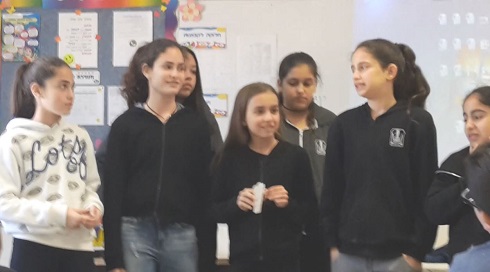
The two slogans chosen by the students were: "On a trip you go - I Cup you hold!" and "The cup will make your life cold."
In preparation for the entrepreneurs' conference held at the end of the school year, the initiators created a model of the glass. Then, they explained that the product could be used as a cup of ice cream that will not melt. It will come in different sizes as needed and has many uses, such as taking dairy products on trips, eating ice cream without getting dirty, and being suitable for fruits and vegetables.
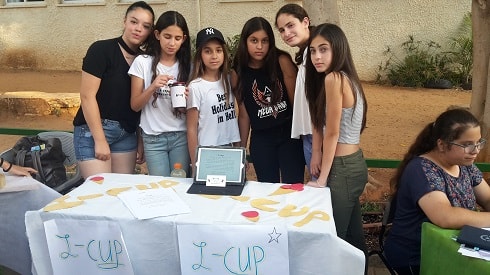
The Venture of the Kids: Magic Hair - Hairstyles Designer
The Elementary School Entrepreneurs:: Fifth Graders at the A.D. Gordon School in Kfar Saba
Magic Hair - A revolutionary hair styling device.
The children introduced their idea for the Magic Hair invention and explained its usefulness: "Anyone can design a hairstyle for themselves easily. The product is suitable for people with disabilities, and it will save people money."
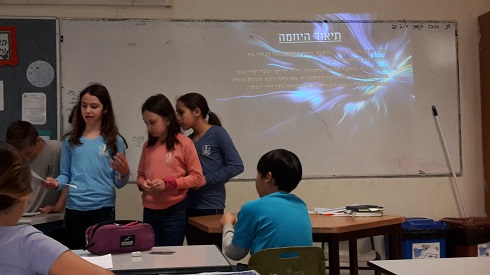
At the entrepreneurs' conference, the students presented a model that illustrates the idea. The parents enjoyed the presentation of the concept.
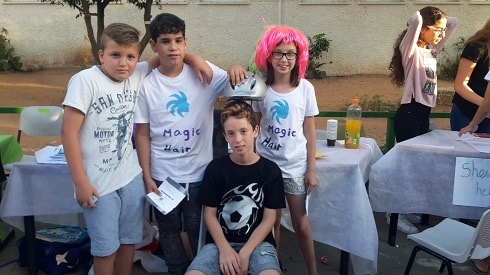
The Young Student's Invention: Wonder Button for Socks
The Young Female Entrepreneurs: Sixth-graders at the A.D Gordon school in Kfar Saba
The idea is to put socks together with a special tick-tack button so that they do not get lost.
Each pair of socks has buttons connecting them. When we put the socks into the washing machine, they stay together and do not get lost.
The idea solves several problems; it saves time searching for matching socks while folding the laundry. It saves money as well by buying fewer new pairs to replace those that are lost.
The slogan formulated by the students for the product: "With the wonder button you chose, your life improved!"
The entrepreneurial girls explained the need for the product and demonstrated its usefulness with a model they prepared:
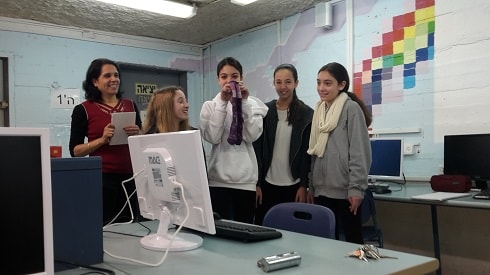

The Students' Venture: Schooly - A recycled organizer
The Entrepreneurial Young Girls: Fifth-graders at the A.D. Gordon school in Kfar Saba
Schooly is a recycled organizer that keeps order and organization and makes use of recycled materials to protect the environment.
The students prepared a prototype of used boxes, presented the idea for the device, and asked for advice:
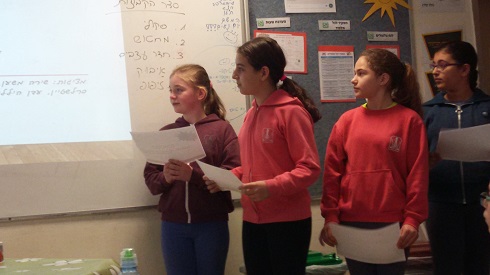
In preparation for the Entrepreneurs' Conference held at the school, the initiators prepared an improved model of the organizer that they presented to the audience.
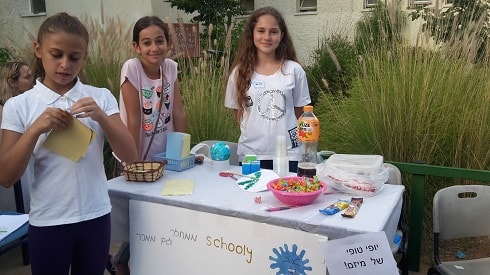
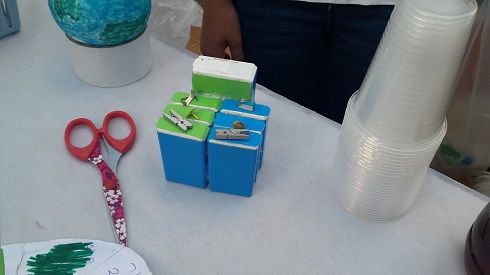
The Venture of the Kids: Food To Go
The Entrepreneurial Girls: Sixth-graders at the A.D. Gordon school in Kfar Saba
Food To Go - This is a heating box for food you take on trips.
The young entrepreneurs introduced the invention to the class:
The students explained that the idea stemmed from their need to warm up food on trips since it sometimes cools and becomes tasteless.
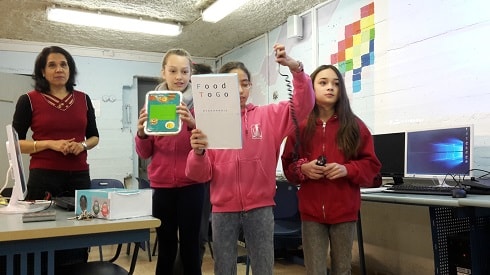
The Environmental Project: Beautiful Landscape and Happy Faces
The Girl Student Entrepreneurs: sixth grade students at the A.D Gordon school in Kfar Saba
Beautiful scenery, smiling faces - is an initiative to paint abandoned houses and buildings.
Explanation of the need for the environmental project:
"Have you ever crossed a residential district and suddenly seen a construction site that has stopped building, which is making the area look ugly and miserable?
Our group: 'beautiful scenery and happy faces', see this every day. Therefore, we have decided to establish a venture.
We go to these places and paint the fences around them so that people living in the area will have a beautiful and colorful living environment.
Before we paint, we check whether we are allowed to paint in their area.
In front of one of the group members' houses, there is such a place, so we have already bought half of the colors to paint it.
Join our initiative, and eventually, everyone will have 'beautiful scenery and happy faces.'"
The entrepreneurial girls are explaining how the idea was born and how it could become a reality.
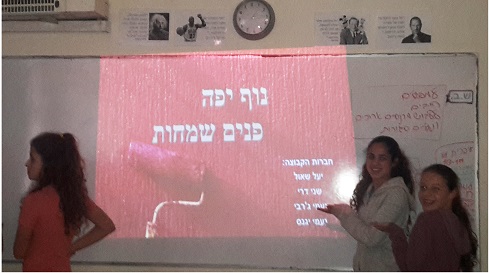
The Kids' Venture: Hand on the Heart to Show that I Care
The Kid Entrepreneurs: fourth graders at the Dvora Omer school in Netanya
Fourth graders at the Dvora Omer school in Netanya attended annual entrepreneurial classes led by teacher Miri Yishai.
As part of a record day at the school, the entrepreneurs presented their ideas for projects to Galit Zamler, asked questions, and got answers to move forward in the realization of their ideas.
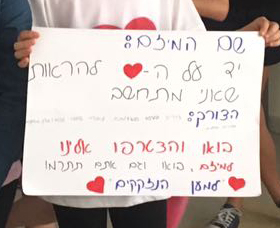
The entrepreneurial children wanted to take part in social and environmental involvement.
They decided that their venture would involve raising groceries, clothing and more for the needy.
The entrepreneurial team made sure to brand themselves with T-shirts that they designed.
The students met in the afternoon and moved among the residents of the neighborhood, collecting many donations.
They took the donations to various organizations such as WIZO, Help on the Way, and more.
Some of the non-profit organizations volunteered to help sort out the various donations received.
The students prepared a presentation (in Hebrew) that describes the idea, the need, and their achievements so far, and came equipped with the following questions to increase the scope of their activity:
- How can you recruit volunteers?
- How can we raise money?
- How can we register as an association?
- What does it take to register as an association?
- How can we advertise our venture?
- How can we find people who are in need?
The Kid's Venture: Locker for Each Student
The Young Boy Entrepreneur: Shachar Shufir fourth grader at the Dvora Omer school in Netanya
Shahar participated during the school year in entrepreneurial classes led by the teacher Miri Yishai.
Shahar recognized the students' need for a personal locker. For anyone to make such a locker, Shachar suggests that the cabinet be made of cardboard so that the cartons can be recycled instead of becoming trash.
The locker that Shachar presented was a sophisticated model that included a large cell for books, two smaller compartments, and an external lock.
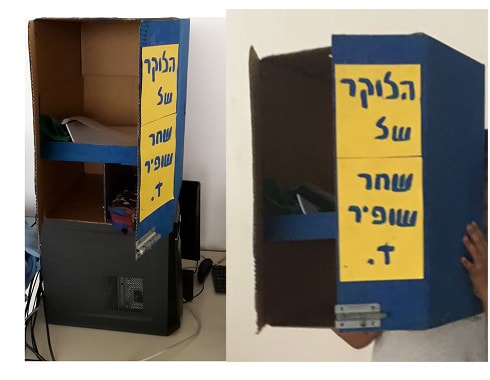
Shachar's presentation (in Hebrew) explaining the idea of the locker device to each student:
It should be noted that the need for students for a locker is a need that is repeated in other schools as well. Read below about the locker with a shelf that the Alumot school students designed.
The Social Venture of the Kids: There is no Birthday without a Cake
The Kid Entrepreneurs: fourth graders at the Dvora Omer school in Netanya
The entrepreneurial students showed sensitivity and understanding toward children coming from families with financial difficulties; hence, the idea for the initiative was born:
These children will celebrate a birthday like any child with a cake, activities, and a gift.
The primary target audience for the social initiative is the school's students.
The question that the kids asked Galit Zamler on a record day, in which the students presented their models: How can we find families interested in our service?
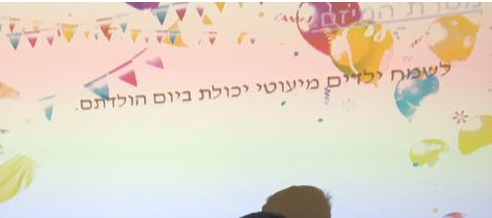
Read below about a similar initiative by students at the Ussishkin school in Ramat HaSharon: "Kids Operate Birthday Parties."
The Kids' Venture: A School Logo for Every Shirt
The Kid Entrepreneurs: fourth graders at the Dvora Omer school in Netanya
The young kid entrepreneurs noticed that students sometimes forget to come to school wearing a T-shirt with the school logo.
They thought of a convenient and straightforward solution - sticking the school logo on a shirt temporarily so that it can be removed easily at the end of the school day.
The first option that came up was to use a symbol that will be attached with Scotch to the T-shirt.
The goal was to introduce the product first in their school as a pilot, and then expand it to other schools.
The venture meets a real need of students and can save money for parents. The school logo can be attached to each smooth shirt, and the shirts can be worn even outside the school.
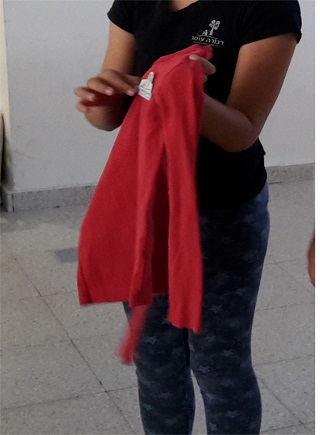
The Kids' Social Venture: CTC - Children Teach Children
The Kid Entrepreneurs: fourth graders at the Dvora Omer school in Netanya
Shira Mordechai, Rom Zohar, Noya Tamam, Liam Burstein, Yonatan Rivak, and Eliad Manor are social entrepreneurs. The fourth graders thought of the social project "CTC - Children Teach Children."
As students, the young entrepreneurs realized that the cost of private tutoring is high, about NIS 100-120 per hour.
The students understand the need for private tutoring at a reasonable cost. They presented a social-business project in which children from the fourth grade and up will teach afternoons to first, second, and third-graders. They will help them with homework in fundamental classes in math, English, Hebrew, and Science.
Besides, the older students will integrate experiential after-school activity groups of football, running, drama, dance, and more.
The CTC's target audience is children aged 6-9 from the Kiryat Hasharon neighborhood in Netanya.
The child entrepreneurs intend to market CTC as follows:
They will gather information about their prospects, distribute flyers to everyone, print branded shirts for the young mentors, and open a WhatsApp group. This group will include older and younger student members.
The mentors and students were divided according to interests and started the tutoring process.
The group of entrepreneurs seemed enthusiastic and cohesive on a record day on which they presented their invention.
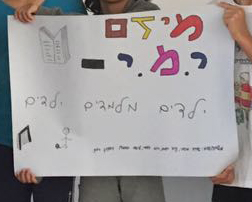
A detailed presentation (in Hebrew) of CTC:
The Invention: "Dogbrella" - Dog's Umbrella
The Girl Entrepreneur: A fourth grader at the Dvora Omer school in Netanya
The Pupil Entrepreneurs: fifth grade students at the A.D. Gordon school in Kfar Saba.
At the Dvora Omer elementary school in Netanya, the young girl entrepreneur recalled how, in the winter, she noticed that the dogs were unpleasant when it was raining.
Although she had no dog, she was sensitive to the environment and decided to make it easier for the dogs.
Her idea is an umbrella for dogs, and to illustrate the concept, she made a model and dressed it as a dog doll.
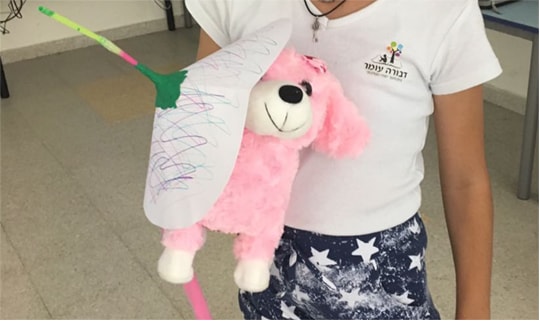
The student called her invention Dogbrella without hearing about a similar idea that was offered by the students at the A.D Gordon school in Kfar Saba.
At the A.D. Gordon school in Kfar Saba, a group of fifth grade entrepreneurs also thought of the same problem, and they also proposed solving it with a very similar idea and with the same name, Dogbrella.
The pupil entrepreneurs defined the purpose of the Dogbrella as allowing dogs to go outside, even when it rains, without getting wet.
The students formulated a slogan to raise an investment: "Invest in Dogbrella and affect dogs."
In the picture, the young student entrepreneurs explain the need for the Dogbrella and illustrate with pictures how it should look:
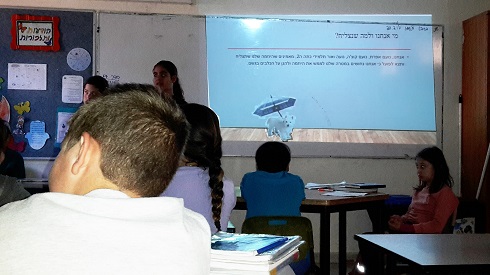
In preparation for the Entrepreneur Convention held at the school, the students prepared a model of the umbrella.
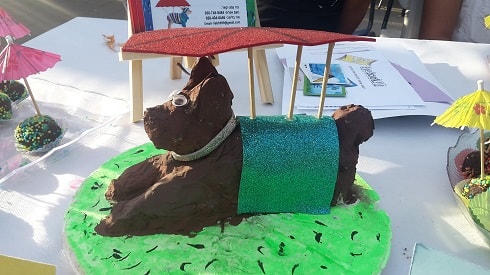
The entrepreneurs presented the model at the booth.
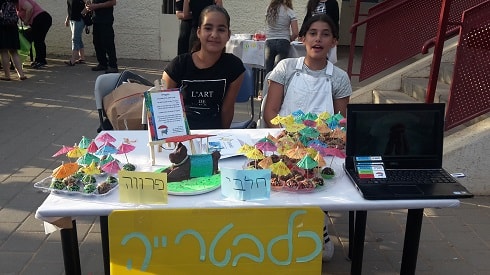
The Kid's Venture: Spinners
The Kid Entrepreneur: Itamar - fourth grade student at the Dvora Omer school in Netanya

There was a time when spinners became the most popular toy among children.
The student Itamar thought to make positive use of the spinners, so even the teachers who are not satisfied with the new toy will find it helpful.
We all know that students like to play with spinners. Thus, Itamar suggested that teachers allow students who have completed the given tasks to play aside with a spinner.
The students who finish the tasks can do spinner competitions as they like.
According to the entrepreneur, the spinner game as a "prize" will encourage students to do the tasks in the classroom. It will also become a connecting factor for students who do not usually play together.
Watch Itamar's presentation (in Hebrew) about the Spinners game:
The Kid's Initiative: A Card Game - Know the City of Netanya
The Kid Entrepreneur: Omer - a fourth grade student at the Dvora Omer school in Netanya
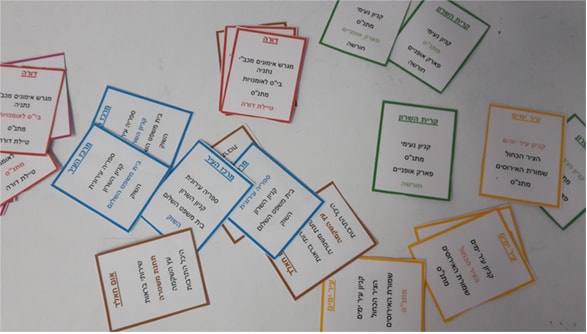
Omer's goal is to prepare enough card game sets and give them to young first-grade students.
Omer planned to start the game at his school, improve the game, and then expand it to other schools, as well as create new card games.
See more ideas for entrepreneurship from the Dvora Omer school in Netanya.
Multidisciplinary Entrepreneurship Conference: Fifth Conference
The Elementary School Entrepreneurs: Students of the Ramot Weizmann school in Yavne
The uniqueness of the Ramot Weizmann school in Yavne, under the leadership of Amalia Suissa, is its multidisciplinary approach to entrepreneurship.
The school develops entrepreneurial skills such as research, information gathering, information analysis, creativity, critical thinking, teamwork, and public speaking.
Every year since its establishment, the school has performed a multidisciplinary entrepreneurship conference.
Galit Zamler was invited to the conference and summarized the many entrepreneurial activities in this presentation (in Hebrew).
The Initiative of the Teen Students: Calm Waves: An Anti-Anger Bracelet
The Teen Entrepreneurs: Students from the seventh grade at the Yad Giora Middle School in Herzliya
The purpose of the bracelet is to help people with anger issues. Using bleeps and vibrations around the wrist will be controlled by the bracelet.
The bracelet will check the heartbeat, and when it rises, the bracelet activates.
The bracelet can prevent anger and reduce conflicts between people.
The entrepreneur boys prepared a model of the bracelets on their own and presented it in the competition "Move Yourself," in which they also won the prize for innovation.
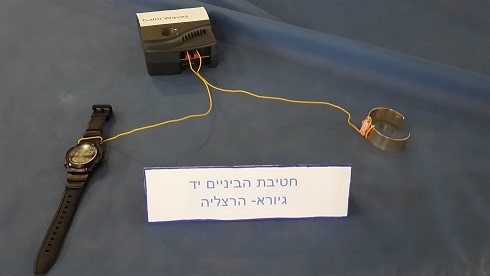
The entrepreneurs at the final round of the competition:
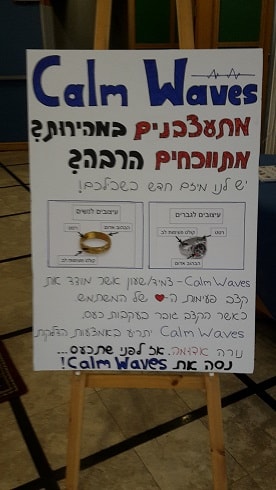
The students were pleased that their idea was appreciated. They were proud of getting the appreciation certificate from Ms. Ronit Zakay, director of the Human Resources Mine in the Tel Aviv region.
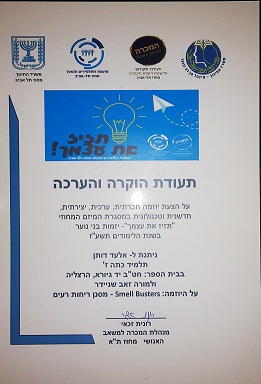
A photo of all the competing entrepreneurs who made it to the finals:

The Project of the Young Students: A Bag that Turns into a Seat - Mini Bigi
The Teen Entrepreneurs: Students from the seventh grade at the Yad Giora Middle School in Herzliya
The invention is a bag that folds into a reclining mode, while the strips are strong enough to support the back of the seat.
This bag can help the elderly by serving as a seat for them when they get tired while walking.
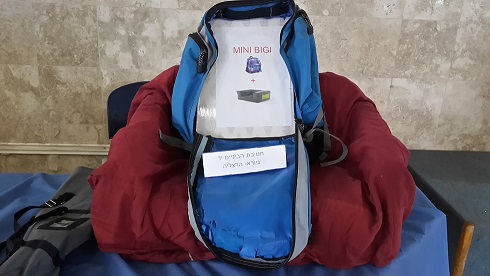
The students made it to the final round of the "Move Yourself" competition and were among the last ten entrepreneurs running for the prize.
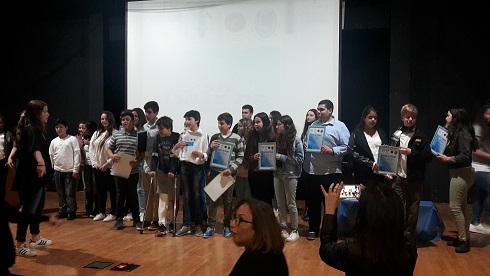
The Initiative: Smell Busters
The Middle School Entrepreneurs: Students from the seventh grade at the Yad Giora Middle School in Herzliya
While all of us are disturbed by the unpleasant smell coming from the garbage bins, the seventh-graders at the Yad Giora Middle School in Herzliya decided to do something about it.
They thought of an air filter that can extract unpleasant odors and emit a pleasant aroma.
The students made sure that the product would be protected, under the cover of the trash can, to prevent damage.
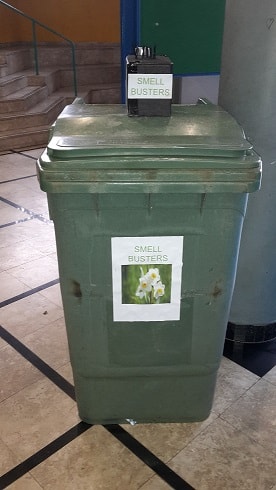
The advantage of this product is that it can contribute to the environment and society by preventing foul odors in areas with garbage bins.
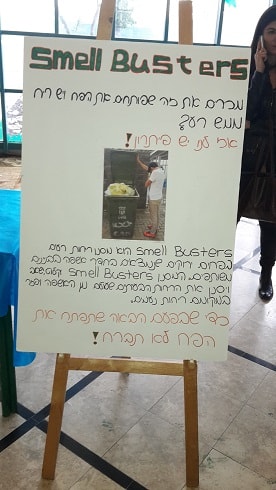
The students produced a film for the competition, showing their solution to the odor problem.
The students got to the final of the "Move Yourself" competition in Tel-Aviv and won a certificate of appreciation for their outstanding initiative.

Read about the idea of the Television Program that made it as far as the top ten in the competition.
The Activity: Kids Operate Birthday Parties
The Child Entrepreneurs: Students in the fifth and sixth grades at the Ussishkin school, Ramat HaSharon.
The idea of the kid entrepreneurs in the Ussishkin school in Ramat HaSharon came from a personal need.
Hiring professional birthday operators and performers can be very expensive for parents. On the other hand, many fifth and sixth graders can assist young kids through fun activities at a much lower cost.
This way, kids can have an enjoyable birthday experience, their parents will save money, and the students who operate the birthday parties will earn money, with pleasure and satisfaction.
The entrepreneurial kids checked and found out that there is a demand for such a venture.
To make it happen, the entrepreneurs organized a group of children who can operate or perform at birthdays according to their talents, such as make-up, sculpture, magic, DJing, games, and more.
The entrepreneurs faced the challenges of gathering information, building a website, and other tasks.

The Project: Food Paths
The Entrepreneurial Kids: The young students in the fifth and sixth grades in the Ussishkin school, Ramat HaSharon.
Ussishkin school students in Ramat HaSharon, who participated in entrepreneurial classes led by Miri Molcho, have raised many ideas for projects.
One of the ideas they promoted and worked toward executing is establishing "food paths" in the surrounding neighborhood of the school.
The idea of "food paths" is that when children make their way to school and back home, they walk through paths alongside herb bushes, and fruit trees will grow.
There are already various plants on the roadside that the municipality maintains, and the students can replace them with edible plants.
For example, instead of bitter orange trees, other citrus trees will be planted, such as orange, tangerine, etc.
The students appealed to the municipality, which invited them to attend a meeting of the Environment Committee. The Mayor and his Deputy participated in this meeting, as well.
The students presented their idea at the meeting and brought the committee's attention to the fact that this idea has been realized successfully in Northern Tel-Aviv.
Members of the environmental committee liked the idea, and now they are promoting its implementation.
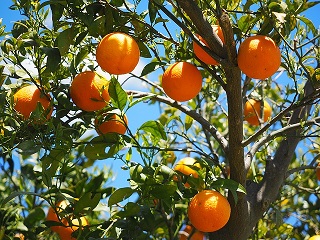
Entrepreneurship Products Market: Year Summary of Entrepreneurial Activity
The Kids Entrepreneur: Students in grades first through six from the Sadot school in Pardes Hana-Karkur
The Sadot school encourages innovative entrepreneurship among its students. This year, seventeen groups of kid entrepreneurs went through a process of identifying needs, developing solutions, selecting the preferred concept, and implementing it.
Galit Zamler, who encourages education for entrepreneurship in schools, was invited by the school head, Talmor Clos, as a guest and summed up the initiative's product market in this presentation.
Entrepreneurial Festival: Displaying Entrepreneurial Processes, School Ventures, and Children's Outputs
The Primary School Entrepreneurs: Students in grades first through six from the Kaplan school in Petah Tikva
The Kaplan school organized a Festival of Entrepreneurship and invited parents, students, and many guests.
During the entrepreneurship festival, the kids presented their ventures to the audience.
These projects were carried out throughout the year by the school children, who were supervised by the school staff, headed by the director, Tali Toledano.
Prototypes to illustrate the ideas were featured as well.
The students explained to parents and guests about the various inventions, the process of identifying the need, finding solutions, choosing a solution, and how it met the problem.
Galit Zamler, who was invited as a guest, designed this presentation to summarize the event:
The Business Idea: An Ice Cream Stand
The Entrepreneurial Young Students: Students in the eighth grade of the HaManhil school, Ramat Gan.
The uniqueness of the HaManhil school is Entrepreneurship, Leadership, Science, and Technology.

Teacher Michal Mamman led Entrepreneurship studies in all school grades. Hence, you can read about many other ventures in which the young entrepreneur students in the school participated.
The eighth-graders know they need to finance their party at the end of the year, when they'll also finish their studies at the HaManhil school.
Because of this, the students discussed project ideas that will help them raise money for the graduation party.
After brainstorming, they decided to set up an ice cream stand in the school.

The students like to eat ice cream, and they were immediately excited about the idea. They prepared a detailed business plan and asked for permission from the school director, Ayala Elbaz, to execute this idea.
Ayala, who encourages her students to foster entrepreneurial thinking, supported the idea of setting up an ice cream stand in her school. The parents' committee also endorsed the idea.
The entrepreneurial students created a poll to determine the three favorite ice cream flavors among students. The poll results showed that the three favorite ice cream flavors are vanilla, vanilla with chocolate chips, and chocolate.
The entrepreneurs made placards, visited the classrooms, and marketed their business to encourage students to attend the stand and buy ice cream.
The entrepreneurs' preparation: They divided the roles among students, made minor adjustments, obtained a fridge that would keep the ice frozen, and arranged spoons, cups, a price list, etc.
On the day of the activity, there was much excitement among the students. The atmosphere was happy, and everyone enjoyed eating ice cream.
The students saved the money they earned from this activity for the graduation party for the eighth-grade students.
The students filmed, edited, and produced a video that described the process:
The Young Students' Need: Soccer Goal Posts
The Teenage Entrepreneurs: The students of the eighth grade of the HaManhil school, Ramat Gan
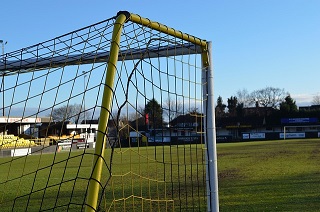
In most of the schools in Israel, there are soccer fields, but at the HaManhil school in Ramat Gan, the courtyard is narrow and long. Because of this, no soccer goal posts were installed there.
The eighth-graders in the leadership and entrepreneurship course, led by teacher Michal Mamman, decided to change the current situation.
They sent a letter to Mr. Rami Levi, the manager of the sports department of the Ramat Gan municipality, and asked him to help install soccer goal spots in their school, despite the given restriction.
The students tried to convince Mr. Rami by telling him that the idea was their dream and that the goalposts would serve the neighborhood residents and younger students in the school, as well.
After the school director, Ayala Elbaz, approved, the letter was sent to Mr. Rami Levi.
The letter of the entrepreneurs:

The translated letter:
To: Mr. Rami Levi - manager of the sports dept. in the Ramat Gan Municipality
Subject: Installation of soccer goal spots in our school
We, the students of the HaManhil school, as part of our leadership and entrepreneurship program, are interested in inviting you to be part of a social initiative in our school.
Soccer goal spots in the courtyard of the school are a necessity so that students can play during recess and afternoon hours.
Soccer goal spots will be used as a means of recreation for all neighborhood residents, not only for school students.
The cost of a soccer goal spot is relatively low. If the goalposts are installed in our school, it will encourage physical exercise among the students and will also bring together the community.
We are aware that the school's structure isn't standard and is very narrow, so we need goal spots that fit our structure.
In conclusion, the soccer goal spots in our school will be beneficial for the neighborhood and will encourage children to stay close to home, and their parents will not be worried.
We are asking for your financial support to make this dream come true, and we would greatly appreciate your help.
We're sure that this project will please many children.
Best regards, the students of HaManhil school.
The students were tense and speculated about the chances of their application being approved.
Mr. Rami Levi acted fast and tried to help the students. He checked the possibility of installing soccer goal spots in the courtyard of the school, but it was clear that the yard is very narrow.
He had to explain to the children that their request couldn't be approved.
Despite the negative response, Mr. Rami Levi was very impressed by the students' proactivity and their attempt to change the current situation.
The letter of reply:
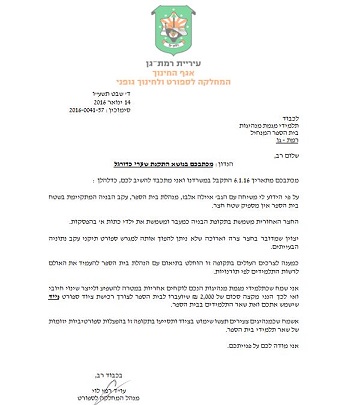
The translated message:
To: The students of the leadership and entrepreneurship course of study in the HaManhil school, Ramat Gan.
Subject: Your letter related to the installation of soccer goal spots in your school
Following my conversation with Ms. Ayala Elbaz, the school director, there is not enough courtyard space.
The schoolyard is being used as a passageway during construction and is also used by the first-grade students during school breaks.
We're talking about a long and narrow yard that can't become a standard sports field because of its problematic dimensions.
Because of your reasonable need, we decided, through coordination with the school director, to allow you to use the school hall, and each class will have its turn.
I'm glad that the students of the leadership course are taking responsibility to help and make a change.
Because of this, I will assign 2,000 NIS to the school to buy mobile sports equipment for the benefit of the school's students.
I'll be happy if young leaders like you use the equipment and encourage other students to participate in sports activities.
Best regards,
Lawyer Rami Levi,
Manager of the Sports Dept.
The students were disappointed with the response, but they understood the reasons and thanked Mr. Rami Levi and the school director for their support and for listening.
After their recovery from the negative response, the students decided to ask the municipality to construct a typical soccer court in their neighborhood.
The municipality asked the students to obtain the support of 80% of the school parents through signatures.
If they got this support, the municipality would consider approving the idea.
The entrepreneurs started a campaign, sent a letter, and explained the situation to the school parents.
Now they're collecting signatures for the campaign.
The Initiative: Play Area
The Child Entrepreneurs: The students of the third grade of the HaManhil school, Ramat Gan.
The third graders participating in teacher Michal Mamman's entrepreneurship lessons decided to create a place for tabletop games in the classroom.
The students collected such games in good condition from other school students. All the students were happy to donate to the play area.
The result: The entrepreneurs collected some enjoyable tabletop games like Taki, Pick-Up Sticks, Submarines, and Ladders and Ropes.
To keep the play area last for the long term, the students had to set some rules, which they wrote on the board:
1. We must return the game in its entirety.
2. Don't lose parts.
3. Don't rip the cards or the boxes.
4. Collect the game when done.
5. Don't mix games.
6. Arrange the games in the play area.
7. Don't disturb a friend during a game.
8. You can play only at a fixed time.
9. Play with dignity when you win, and when you lose.
10. Enjoy playing with your friends.
11. Play by the game rules.
All the students accepted the rules and had a lot of fun.
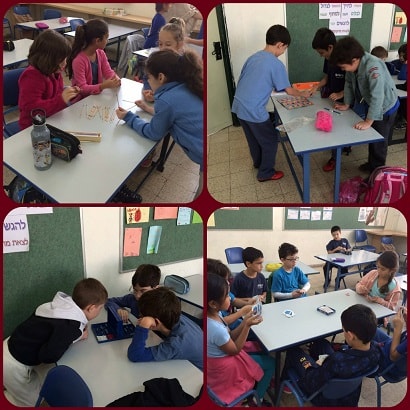
The Invention: Locker with Shelf
The Inventor Children: The students in the fourth grade of the HaManhil school, Ramat Gan
Like many ideas, the idea for a locker with a shelf came up out of a need. One of the students looked for a cabinet with shelves to divide the books and notebooks.
The students liked the idea and helped to design the finalized product.
The students brought cartons and cut them on one side.
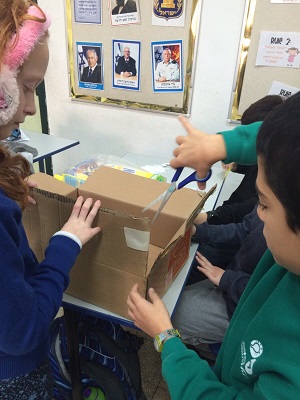
They put clamps on both sides to place the shelf.
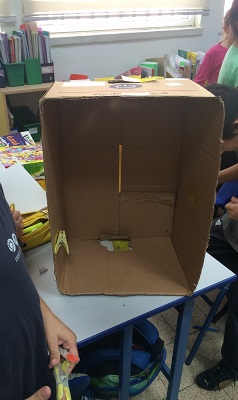
On the clamps, they placed a shelf from a carton.
The cabinet prototype:
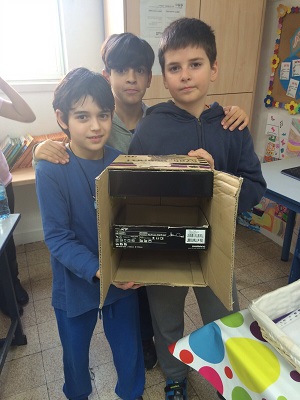
The Idea of the Kids: Lollipop Wrapper
The Pupil Entrepreneurs: The students in the fourth grade of the Hebrew Reali School, Haifa
The students in the fourth grade at the Hebrew Reali School in Haifa, with the help of teacher Keren Mizrahi, discussed many ideas for inventions.
One group suggested developing a lollipop wrapper that would be easy to open.
The idea was born from the need for children who struggle to open lollipop wrappers.
The pupils asked to improve upon the idea so that the lollipop will be bigger than usual, and they'll close the wrapper every time so that they will enjoy licking the candy in the easy.
The model of the lollipop:

The opening is done with Scotch tape. Because of the easy use of the wrapper, the students decided to call the invention Easily, which means "easy for me" in Hebrew.
The students created a poll: They went into the classrooms and described their lollipop wrapper to the students. They asked questions and discovered that most of the students were interested in a solution like that.
Excited by the process, the entrepreneurs asked to present their prototype to a candy company in Israel. They hoped the company would like it and want to use it.
The students visited the factory of the Elite company in Israel, presented the model of the wrapper, explained the need, and answered questions.
A photo from the visit:
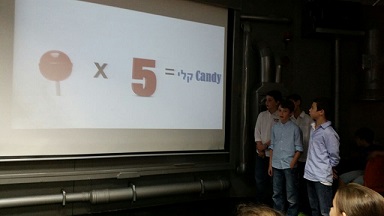
The Elite directors liked the idea of an easy-open candy wrapper but asked the students: "How can we reuse the candy wrapper without it becoming sticky?".
The students returned to the school with this question to continue developing the idea.
The Invention: Toddler Head Holder
The Young Inventors: Students of the fourth grade of the Hebrew Reali School, Haifa.
fourth grade students at the Hebrew Reali School in Haifa took part in the entrepreneurship program taught by teacher Keren Mizrahi.
The students had many project ideas. After a process of brainstorming, they decided to develop one of them: a strip that will hold the head of a toddler who sleeps during car travel.
The inventors were interested in the idea because they knew the problem. They started developing the product with great enthusiasm.
The kids planned how the strip would look, how people would close it, and how they would open it. They even thought about different colored stripes for girls and boys.
After planning the product, the students created a poll for the targeted audience, and it was clear that if there were a product like this, many parents would buy it.
Then the children had to create a prototype of the idea. They got help from one of the grandmothers in their classroom who knew how to sew and was willing to help them.
The result:
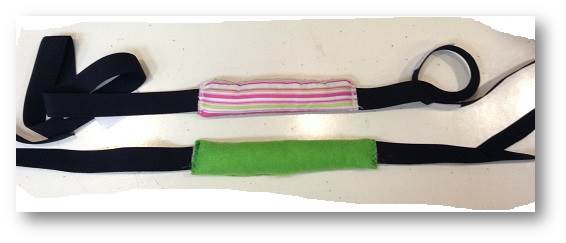
One of the lessons the kids learned from the entrepreneurial process they went through was that before we put efforts into a prototype, we must know the subject well.
The students didn't know that in Israel, it's forbidden by law to tie infants this way, even if the parents allow it.
Children's Venture: Squeezed Fruit Stand
The Kids Entrepreneurs: The students of the seventh grade at the HaManhil school, Ramat Gan.
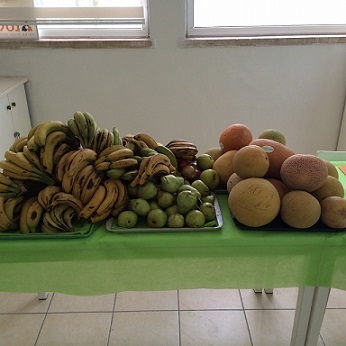
The entrepreneurs from the seventh grade of the HaManhil school in Ramat Gan had two ideas they wanted to carry out.
One idea was a squeezed fruit stand, where they would sell fruit smoothies to the other students.
The other idea was to change the school's ring bell. They wanted to choose a song instead of the standard school ringtone.
However, they learned that the school's bell ring system couldn't be changed easily. And if they want to change the standard ring tone to a song, they will need to buy a new school bell system. Such a system would cost a lot of money. Finally, with much determination and perseverance of the children, they managed to raise enough money, and with the help of the school, they switched the bell system to such that it is possible to play songs as a ringtone.
Michal Mamman, the teacher who leads the entrepreneurship program at the HaManhil school, presented the children's ideas to the school principal, Ayala Elbaz.
Ayala gave her permission to start a squeezed fruit stand at the school, but only if the children would show her a detailed business plan.
Ayala added that if it worked and the young entrepreneurs launched this stand at the school, she would allow the children to use the money earned from the fruit smoothie sales to change the school bell system.
The students started by planning the venture.
They decided to prepare and sell the fruit smoothies in the Science room.
They chose this room because it's a big room with a lot of space. It's located at the entrance to the school, and there is a sink in it.
They planned which fruits they would use and how they'd get those fruits. Teacher Michal Mamman and Ayala Elbaz agreed that the fruits would be "recruited" by the enterprise members.
The children also set the price for every cup of shake. The school students brought fruit, so the entrepreneurs could sell smoothies for 2ILS and still have a profit. The school staff helped the entrepreneurs get blenders for the mission.
The school teachers also helped the entrepreneurs to keep pace with many children from the school. The schoolteachers took care that every class in the school would come to the stand in their turn. The entrepreneurs also managed the cash, cups, and straws.
The students took care of more issues: They washed the fruits a day before. They asked the superintendent to give them an extension cord with some sockets. They prepared placards and took care of background music during the activity.
After the school entrepreneurs finished planning the detailed business plan, they met with the school director, Ayala Elbaz, presented their plan, and got her approval to make this happen.
The entrepreneurs started to collect fruits from the students and particularly asked for peaches, apples, melons, bananas, and pears.
The school director sent an email to all school staff, students, and parents to ensure the venture's success.
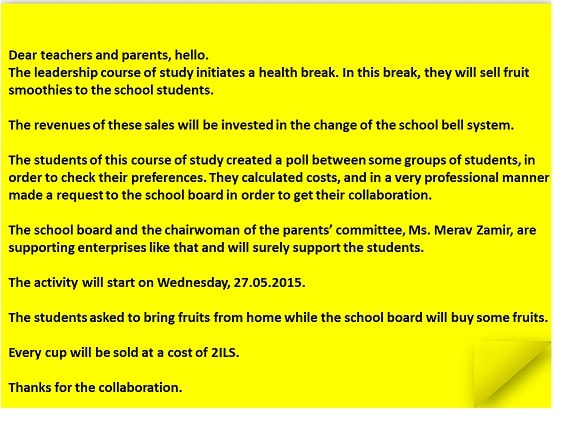
On the day of the activity, the student entrepreneurs came to school very excited. The stand worked for three hours in a delightful atmosphere.
Photos that illustrate the atmosphere:
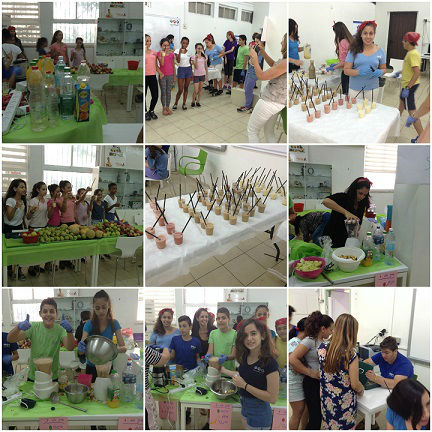
Michal summarized the kids' project: "It was very successful."
And the entrepreneurs agreed: "It was fun."
Ayala Elbaz also concluded the squeezed fruit stand venture:
"Thank you, Michal, for the healthy break that was led by the seventh-grade leadership course students.
The smile on every child's face in the school was everything for me. The timing was perfect.
On a hot day, the children earned a fresh cup of health.
The children earned 520ILS, and they're planning to buy a new school bell system with this money. Big thanks to Galit and Eva, who helped."
Now, the children are planning to replace the old school bell system with a new one.
The Children's Initiative: Activity for First and Second Graders
The Pupil Entrepreneurs: The members of the youth entrepreneurship course at the Mordei HaGeta'ot school, Ramat Gan.
In honor of Israel Independence Day in 2015, the young entrepreneurship group (fourth and fifth grades) of Mordei HaGeta'ot school arranged an activity for the first and second graders in their school.
The entrepreneurs organized an active break with some activity stations (on the subject of the Israeli Independence Day):
A station of coloring pages - they printed the pages at home in advance.
A station of Magen David puzzles - they were created by themselves.
A station for making headbands in white & blue colors like the Israeli flag.
A station for making white & blue bracelets.
A station of pennants - they made Israeli flags with the children.
A station of make-up - a unique white & blue make-up in honor of Independence Day.

The Facility of the Children: Students' Room
The Child Entrepreneurs: The students in fifth grade at the HaShalom school, Mevaseret Zion.
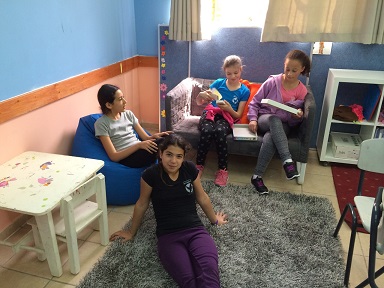
The young students considered building a students' room within the entrepreneurship studies, led by the vice-principal, Sigal Bar.
The idea arose from pupils' need to have a quiet and pleasant place of their own in the school, which will be used by them all year, especially on very hot or rainy days.
After the children formulated the idea, they created a business plan and defined what they needed to make their dream come true. They started to work to make it possible.
First, they talked with the school principal, Zehava Issachar. She approved the idea and helped allocate a room for it within the school.
Zehava, who fosters entrepreneurial spirit among pupils, contacted the municipality and asked them to allocate a caravan that would be placed in the schoolyard to accommodate the students' needs.
After placing the room, the young students proceeded to the next step. They listed what they wanted to have in the room, so everyone would feel comfortable staying in it: pillows, a library, books, a computer, carpet, colorful walls, etc.
It was clear to them that if they wanted to execute the idea, they would need money. Because of this, the young entrepreneurs launched another business venture to raise funds for the "Students' Room." It was a Tu Bishvat fair, which you can read about on this page.
In the "Free Lesson" magazine, published in March 2015, Tamira Galili wrote: "According to Sigal Bar, the vice-principal and the project head, the children worked very hard to raise the money for purchasing furniture and additional facilities."
Before placing the furniture, the kids colored the room with pleasant colors.
This is how the room looks in the end:
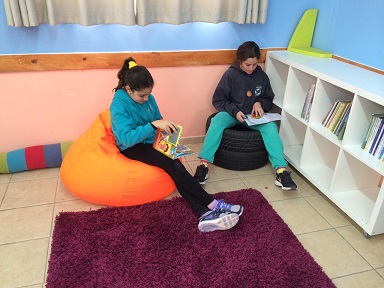
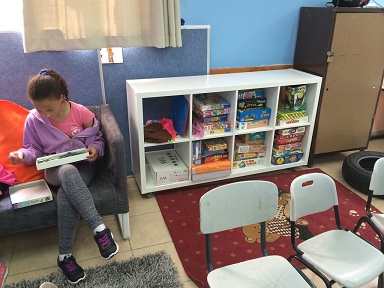
Read the article (in Hebrew) about this venture and other projects launched throughout this program.
The Invention of the Children: Guess What
The Young Inventors: The students of fourth, fifth, and sixth grades at the Alumot school, Tel-Aviv, who participated in a Hackathon
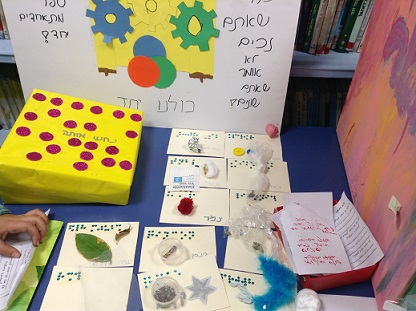
The children's idea: A game for the blind and for people who are not blind, based on products you can touch, smell, and hear.
The children wrote on the cards in Braille by sequins the names of the items inside the box.
The inventors researched Braille, learned how people write in this font, wrote the names of the products, and respectively attached sequins on the cards.
There's also a typical script on every card for people who can see.
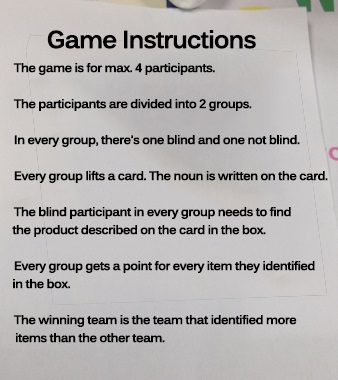
- The game is for up to four participants.
- The participants are divided into two groups.
- In every group, there's one blind person and one who is not blind.
- Every group lifts a card. The noun is written on the card.
- The blind participant needs to find the product described on the card in the box.
- Each group gets one point for every item they identify in the box.
- The winning team is the team that identified the most items.
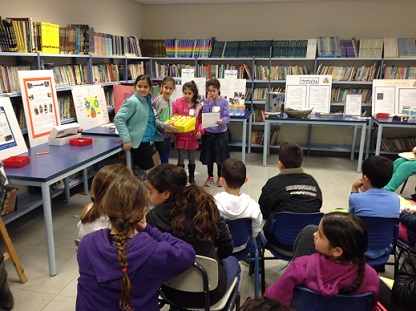
The Kids' Project: Charity box
The Young Social Entrepreneurs: The students in the fourth, fifth, and sixth grades at the Alumot school, Tel-Aviv who participated in a Hackathon
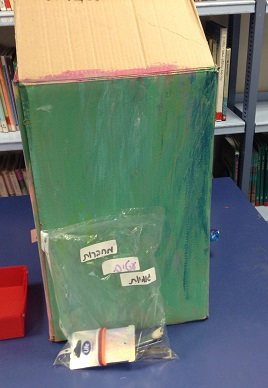
A charity box is a box that will be placed in school, and pupils who find lost items will put them in this box. The items are pencils, pens, scissors, notebooks, books, etc. This social venture will help every pupil who loses something to find it easily.
Besides, the box will serve as a charity box. If someone needs something, he/she can loan it for personal use.
In the picture, the kids present the box to the members of the joint Hackathon for the fourth through sixth grade pupils from four elementary schools.
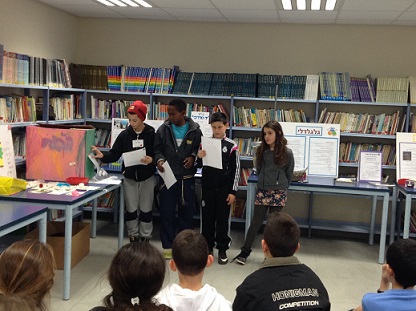
We may note that it was the first year that the Alumot school pupils took part in the Entrepreneurship for Kids Program, and during three events of the Hackathon, they learned, internalized, and executed some ideas.
The Children's Invention: Three Bins Trash -"Tri-Bin"
The Child Entrepreneurs: Students in four to six grades at the Kaplan school in Petah Tikva, participated in a Hackathon.
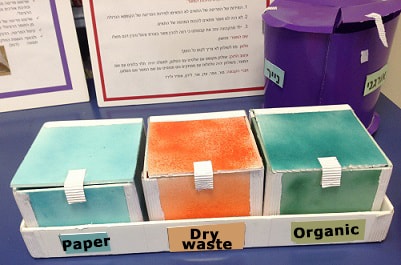
The invention idea: : "Tri-Bin" - a small can that will be on the student's desks, divided into three cells for three different types of waste: paper, organic, and dry.
The product meets the children's need to reach the bin placed in the middle of the class. When throwing waste, they interrupt the teacher. A can on the desk would solve this conflict.
Description of the Invention: The design is built for three cans (cells), each cell has a name (paper, organic, dry waste), and the trash can be recycled. The kids designed two shapes of the can: a round tin and a square tin, both have the same divided cells.
Preparation Stages of the product: At first, we identified needs, then we did a market survey to choose one need. We wrote about the advantages and disadvantages of every need, then decided to prepare the table bin.
Product Benefits:
- Prevents distractions during the lesson - you do not have to get up to go to the trash during class.
- The Tri-Bin raises awareness of the importance of recycling amongst school students.
- It helps to recycle waste at school.
The difficulties we encountered in preparing the product:
- The sizes of the deployment cells didn't match the size of the big box.
- We didn't have the right material to make the cover of the cells.
- One kid from the group left because he wanted to make a rounded product and made a model of his own.
Marketing the product:
Product name: Tri-Bin
Slogan: A bin for the desk, you don't have to get up all the time!
Booth Design: A table decorated with slogan signs. Above, there will be hanging balloons with the product name. On the table, there will be baskets with candies and magnets with the product name and slogan.
The entrepreneurs are presenting their invention at the first Hackathon for students in grades four to six in Israel.
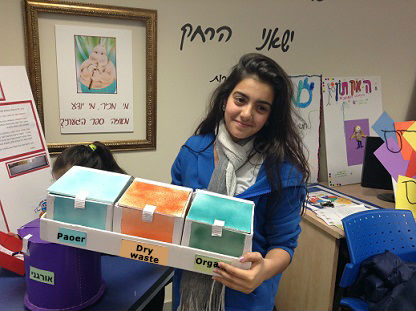
The Invention of the Kids: Pencil Case with a Personal Design
The Young Student Inventors: Students in grades four to six at the Kaplan school in Petah Tikva, who participated in a Hackathon.
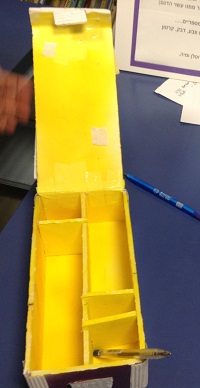
Invention Description: An average-sized pencil case box that can be divided into cells
The product meets the need for organizing the equipment in the pencil case efficiently.
Preparation Stages of the model:
- Measure the height and width of objects, usually stored in a pencil case.
- Drafting a smaller version of a pencil case by measuring objects, and writing the real lengths and heights on the thumbnail layout.
- Drawing and cutting a layout of the real-sized pencil case.
- Turning the box into a pencil case and coloring it.
- And eventually, adding the parts that enable cell division.
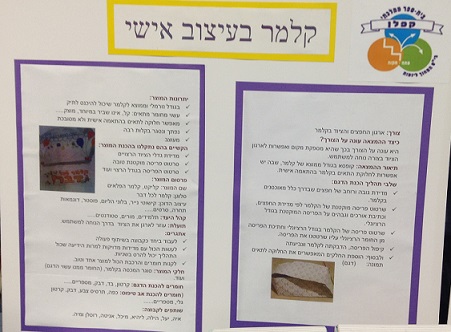
Product Benefits:
- The average and standard size of a pencil case fits a bag.
- Made from a suitable material: lightweight, not breakable, solid
- Enables personal simple cell division
- Easily opens and closes
- Design
The difficulties we encountered in preparing the product:
- Measuring the desired size of the equipment
- A good, smaller draft version
- Drafting in the desired size
Advertising the product:
Product name: Clicket - the wonder pencil case
Slogan: a pencil case for everything
Booth Design: Papercuts decorations, helium balloons, poster, lace examples, ribbons
Audience: students, teachers, and academy students.
Benefits: Helps to organize the equipment in a comfortable way for the consumer.
Challenges in implementing the product idea:
- Working together in collaboration as a group.
- Do everything with accurate measurements despite knowing the whole process can be destroyed in seconds.
- Buying materials and setting them up as one right product.
Materials for the sample preparation: Cardboard, fabric, glue, scissors
Materials for the prototype: Kappa, spray paint, glue, corrugated cardboard, scissors
The kids are presenting the pencil case enterprise to the participants of the Hackathon.
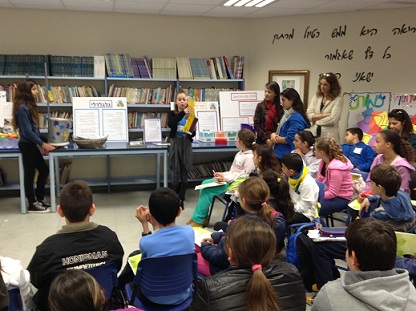
The Invention: I wrote, I solved, and I succeeded - a Math Game for Blind Kids
The Entrepreneurial Pupils: Students in grades four to six at the Kaplan school in Petah Tikva, Hackathon participants.

I wrote that I solved, and I succeeded - a math game for kids who are blind in the first grade.
In the game, players learn addition and subtraction skills within the range of 10.
Number of participants: 2-4
Parts of the game:
- Coins with an embossed number on them
- Empty coins
- Corks with highlighted signs of addition and subtraction using Tulip glue
- Numeral board in sequence from 1 to 10

Game rules:
- Each participant, in his turn, composes an addition or subtraction problem with the coins.
- After solving the problem, the participant puts the empty coin on the solution that appears on the board.
- After placing a coin, you can't compose a problem that has the same result.
- End of the game: Complete coverage of the entire board.
The Invention of the Children: Galgaldli - a bucket with wheels and a pole
The Young Inventors: Students in grades four to six at the Kaplan school in Petah Tikva, the Hackathon attendees.
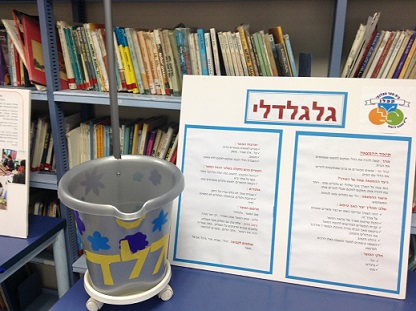
The idea for the device: a bucket with wheels and a pole to help use it.
Product Purpose: The product helps people who have difficulty moving a bucket from one place to another when cleaning their house.
Target audience: Elderly and disabled people, who often find it difficult to lift a bucket full of water.
How Does the Invention Meet the Need?
The bucket has wheels and comes with a pole. This makes it easy to move it from one place to another without having to lift it.
The developers are presenting the invention at the Hackathon event:
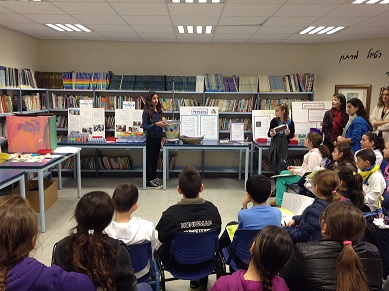
Prototype Stages of Production:
- Identify the need and check whether there are already products that meet this need
- Prepare product drawing
- Buy items that are required to make the prototype
- We asked the housefather for help with making the prototype. He assembled the wheels and the pole
- We managed a budget
- We added decorations to the product and discussed ways to publish
Product components: Bucket, wheels, and pole
Invention Benefits:
- Assist disabled and elderly people
- Easy, sturdy design
- Moving the bucket around effortlessly
Encountered Product Difficulties:
- Budget management, thinking about what everything required for the product would cost, and how much money each person would have to provide for this project.
- Find needed components such as wheels and poles
Assess Development Challenges:
- We had difficulty establishing teamwork because not everyone was available at all times
- Bucket wheels did not fit as planned
Product Advertising:
Choose product name: Galgaldli
Slogan: Same product, Same price, Faster
Booth Design: a big billboard with the slogan. Slogan stickers taped to desks: a stage to place the bucket and helium balloons.
The Useful Device Idea: "BottleKeeper"
The Pupil Inventors: Students in grades four to five at the Yad Mordechai school in Bat Yam, who participated in the Hackathon
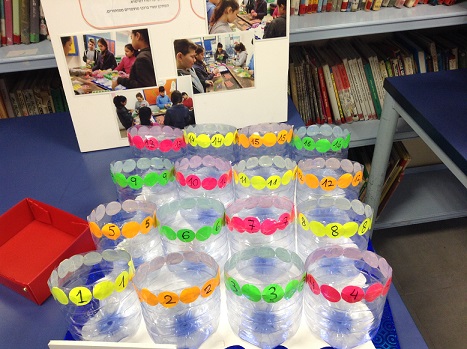
BottleKeeper - a bottle keeper
Idea Description:
"BottleKeeper" - a device that holds the water bottles of the students during gym classes.
We will cut two-liter bottles in half and place them with glue on a level surface. Students will put their water bottles inside.
Students will recognize their personal "BottleKeeper" by their names.
Product Purpose:
Allow students to attend gym classes with a water bottle.
Bottles are similar and might confuse children about which bottle is theirs. Bottles might also fall and spill.
Benefits of the Device:
- Easy for children to find their bottle
- Ease-of-use and comfortability
- The device is made from recyclable materials
Preparation stages of the product by the student entrepreneurs:
"First, we thought about different subjects, then we thought about the problem we have during sports class with water bottles.
Since the "Yad Mordechai" school is a green school, we are aware of environmental protection. We used and recycled our materials and decorated the bottles with stickers.
We thought about putting the bottles on plywood. Eventually, we chose a lighter surface called kappa.
We numbered the bottles according to the class's name list. The numbering helped to identify the bottles.
We believe the facility is efficient, comfortable, and eco-friendly."
The Kids' Game: Who am I? An Introductory Game for Blind Children
The Children Entrepreneurs: Students in the sixth grade at the Yad Mordechai school in Bat Yam, who attended the Hackathon.
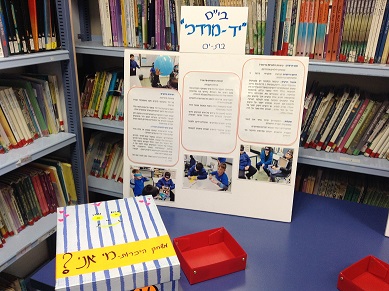
Who am I? An introductory game for blind kids
The students described the game idea:
A box containing various toys, such as a disk and a car. Each plaything represents a symbolic meaning.
As in "pass the package," participants sit in a circle and pass the box from child to child as background music plays.
Once the music stops, the child with the box takes out a toy, and while touching it, they have to guess what toy it is and connect it to their personal world.
For example, if a child takes out a car, he/she will talk about the places where he/she like to travel. If they take out a disk, then they talk about a particular song that appeals to them.
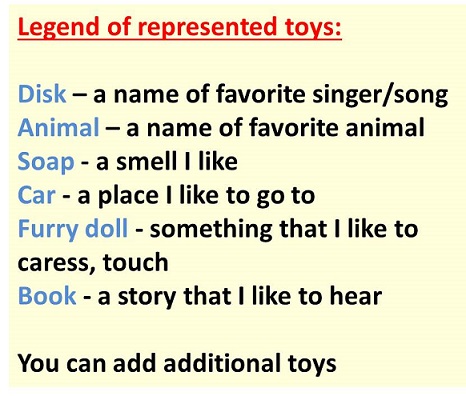
Game's Benefits:
- Allow students to get to know one another.
- Students will discover things that they have in common.
- Transferring toys from hand to hand fosters openness and connection between the children.
Student Entrepreneur Preparation Stages:
"At first, we considered various ice-breaking games, and every time we saw problems, we came back to the same idea because we had seen that ice-breaking games are not suitable for children with impaired vision.
We realized we needed to consider alternative solutions, especially for those with limited vision.
We wanted the game to be friendly and helpful for getting to know each other.
We tried to think of a combination of the sense of touch and hearing in the game. This led to the one we ultimately chose.
We also chose items that symbolized things for the children.
Of course, you could add additional objects in the box as much as your imagination allows."
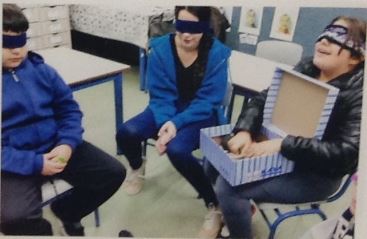
Additional ideas that Came Up During the Development of the Venture:
Preview of tasks:
We asked each child to bring a significant item from home.
While sitting in a circle, each child tells the others something about themselves. They also explain why they chose their object and discuss how it connects to them.
After the children view the objects and hear personal stories, we then ask other students if they understood each belonging and found commonalities.
Another idea for an introduction game:
Needed equipment: A ball that contains a bell, or a large balloon containing rice, for noise effects.
The students sit in a small circle. After initial introductions, one student will roll the ball towards the other child and say the other child's name.
The child, who is called by his name, gets the ball and touches it to tell three different words starting with the first letter of his name. For example, Ronen - Robot, rag, radar, and then roll the ball toward the other child.
Children who play the game can decide on any other ideas, such as using the names of animals.
The Product: Dumishush - A Box Game
The Game Developers: Students in fifth grade at the Hashalom school in Mevaseret Zion, who took part in the Hackathon.
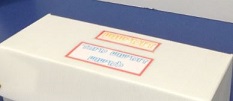
Dumishush - a box game in the style of the familiar Domino, suited for blind people.
Product Goal: Prepare an experimental and available game for the blind
Product Purpose: Creating a game in which people who are blind and people who can see can play together.
The Solution:
Use a known game and acknowledge the needs of the blind. Combining those two things created a game suitable for them.
Plan and Execution:
Choose materials - black polygonal, split pins, wooden toothpicks, glue, and double-sided tape.
Workgroups: We got divided into groups of three to work on polygonal cutting, punching holes, and diverging split pins, pinning sticks, and closing with double-sided tape.
Work Time: 3 sessions for approximately 8 hours.
Product Assessment: We ran a test game. By playing with our eyes closed, we got a real feel for its fun and enjoyment.
Product Evaluation: What can we improve?
- The double-sided tape didn't adhere well, so we used a glue tape.
- We believe that a board game would make it easier to put the domino dice on.
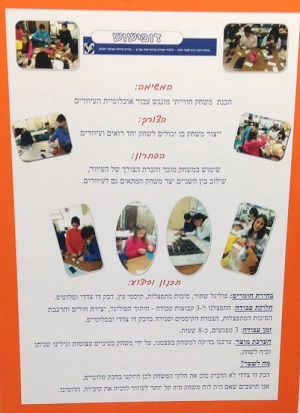
The Students' Facility: Class Organizer
The Young Entrepreneurs: Students in fifth grade at the Hashalom school in Mevaseret Zion part of the Hackathon event.
A group of students in fifth grade at the Hashalom school in Mevaseret Zion, took an active part in three sessions at the first Hackathon for students in Israel.
During the Hackathon, students at the Hashalom school with students of Kaplan in Petach Tikva, Yad Mordechai in Bat Yam, and Alumot from Tel Aviv came up with product ideas and took some of them into practice.
Young entrepreneurs from Hashalom school considered and planned a venture for the class' students.
Their class organizer invention:
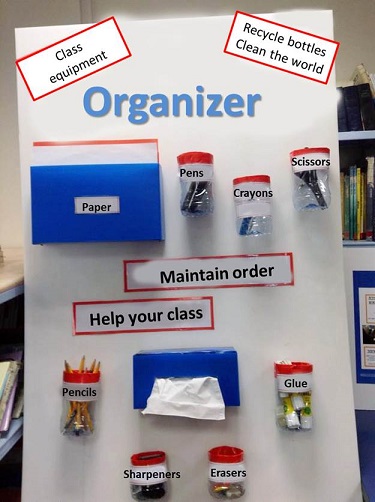
The students developed the product after identifying a mutual problem.
Defined problem:
When the class and the teachers lack a piece of equipment or an item is unavailable, it is difficult to work or manage a lesson.
Solution Requirements:
- Easy to see the equipment
- The solution should not take up much space
- The equipment everyone needs will be organized
- Keep equipment in one place
- Make the equipment easy to access.
- Use available lightweight and recyclable materials.
- Each type of equipment has a separate cell.
Problem: The need to organize equipment for teachers and students.
Students have various ideas for problem-solving:
- Personal Organizer per student (in a box on the table).
- Teacher's desk organizer
- Classroom organizer
Needed Materials:
Polygal, plastic bottles, paper, pages, nylon, split pins, adhesive tape, double-sided tape, colored tape
Planning:
- Thinking about the product name and slogan
- Consider the material and base size
- Divide tasks between groups
- Design and draw the cells for the equipment
- Decide on product design, including color choices and decorations
- Plan and draw the position of the tanks and headlines on the board
- Assemble, organize, and connect the tanks to the board
- Prepare the product name, slogan, and notes on the tanks
- Glue headlines, slogans, and notes
Suggested Improvements:
- Put a protective film on bottle edges.
- Wrap the headlines with nylon to keep them safe.
- Strengthen the base panel.
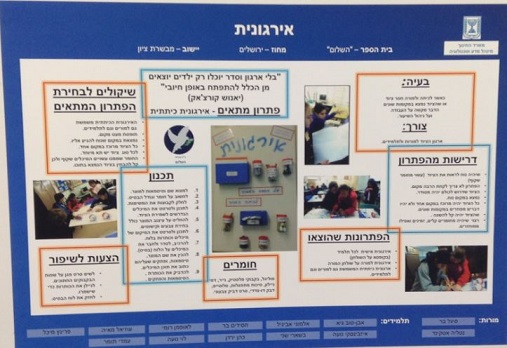
The next plan: During the summer break, eighteen organizers will be assigned to the classrooms at the HaShalom school. The goal is to inspire other schools to adopt the product.
The project has been so successful and got a newspaper article named "Free class." The project also attended a Scientific Conference, which was held at the Jerusalem Technological Development Center. The technology product category has received a great deal of interest, which has led to a nomination.
The Business Invention: Tu Beshvat Fair
The Child Entrepreneurs: Students in fifth grade at the Hashalom school in Mevaseret Zion
A group of students in fifth grade at the Hashalom school in Mevaseret Zion came up with an idea for a project; a students' room like the teachers' room. It would give students a cozy place to relax.
The kid entrepreneurs presented the idea to the school principal, Zehava Issachar, and got her approval to establish the room.
The children needed money to make this happen. It would pay for bean bags, rugs, a library, a computer, board games, and shelves.
The students decided to raise money through venture sales on Tu Beshvat Day.
Sigal Bar, the vice principal who led the entrepreneurship course at school, supported and encouraged the students.
They defined the Sales Fair as the Tu Beshvat fair. The entrepreneurs prepared, priced, and sold:
- Houseplants they made and planted
- Bookmarks recycled from natural materials
- Seed bags they made from newspapers
- Healthy sandwiches
- Skewers of fresh and dried fruit
- Popcorn
- Orange juice and cakes
The young students got the products from the school.
Planning and preparations helped make it a great day for all. The students felt responsible and wanted to sell as much as possible to finance their rooms.
The child entrepreneurs were satisfied with their achievements and revenue.
The Sales Fair:

The Children's Social Venture: Guided School Tours
The Entrepreneurial Kids: Students in fifth grade at the Sadot school in Pardes Hana-Karkur.
The Sadot school in Pardes Hana-Karkur is a growing school, whose graduates are fifth-graders.
The attending students of the entrepreneurship course decided on a social enterprise idea, which they carried out during the school year.
Students were divided into groups of four. Each group chose a class to accompany on the school's trip.
For the trip, the entrepreneur students learned their route. On the day of the trip, they were the guides who explained the places they visited.
It was a fulfilling exercise for the young leaders and students who benefited from hearing the explanations up close.
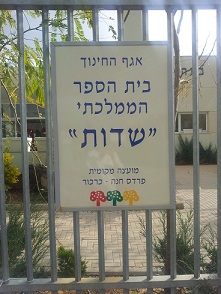
The Students' Business: Vintage Clothing Store
The Entrepreneurs: seventh grade students studying entrepreneurship at the HaBiluim school in Ramat Gan
seventh grade students from the school of design and architecture HaBiluim in Ramat Gan participated in a Business Entrepreneurial course. The school principal, Michael Pinto, hosted it.
After students learned about different types of ventures: business, social, social-business, technology, etc., they chose to create a second-hand vintage store to sell clothes, toys, accessories, books, and more.
The students explained to parents which topics they will learn in the classes:
- Business Initiative and Entrepreneurship
- Business Planning
- Marketing
- The art of selling
- Accounting
- Building a website to display the items for sale.
To help with the venture, the students asked parents to bring: Used clothing in good condition for children, women, and men, and games and jewelry. They were also asked to bring accessories, books, and hangers.

The Defined Goals:
- 7th-grade students' experience in planning, implementing, and marketing the venture.
- Cooperation between the school's students and parents.
- Contribution to the school's community and assistance to needy families.
Thanks to the students and Principal, Michael Pinto, the shop was launched with much enthusiasm.
The parents donated clothes and accessories - all in good condition. The donations were placed in the school's shelter, where the student entrepreneurs sorted the clothes by color and prepared them for washing.
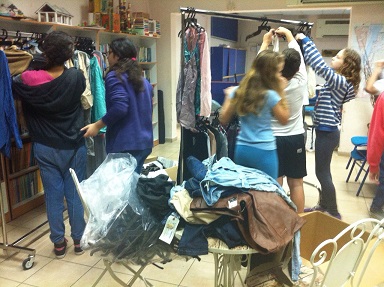
At school, the students got help from the teacher, Bat-Sheva, who designed tags for the clothes and attached them to clothes with a particular "gun," which the store acquired.
On the tags, they wrote the slogan: "Just a Second - Second-Hand Shop."
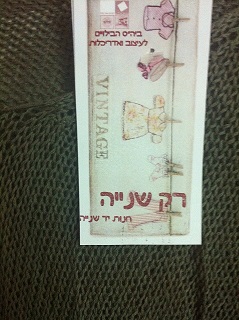
Each student entrepreneur's group family helped wash a bag of clothes. After they came back clean and ironed, the students hung them on hangers and racks, which were also donated by parents at the school.
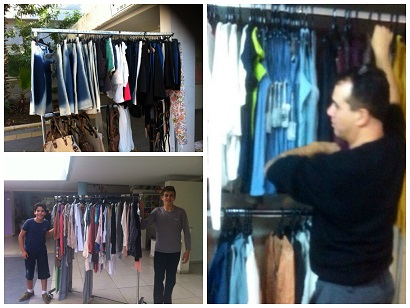
One of the signs of the potential success of the enterprise is the entrepreneur's desire to realize the idea. The vintage store was successful because of the help of the school principal, Michael Pinto. Michael's ability to excite the school children and the parents contributed a great deal to the success of the enterprise.
In addition to the clothes and accessories donated by the school's parents, Principal Michael turned to various companies in Israel and explained about the children's venture. He also gained their support for the store. The companies sent hundreds of brand-new clothing items and accessories to the school.
We want to thank Renuar, Home Center, and Sack's store chain for their kind and generous support. They contributed to the second-hand store, which was a great success.

Applying for support from commercial companies is, in itself, a tool for young entrepreneurial students to learn. While Michael called the companies to try and get their help, the entrepreneur students gathered in his office, listened, and learned from him directly how to make calls about raising support from commercial agencies that benefit the store.
As a picture in Michael's office plainly shows, it became a virtual clothing garage. Because of the many ongoing donations, there was a need to buy a warehouse. They accomplish this by first learning about the finances involved in starting a business. They also needed to raise initial capital. Students did this through operating "sweet breaks". They kept track of costs and balance sheets.
The students learned the importance of invoices and how to prepare them. In a collaborative thinking process, they made a price list of clothing and accessories offered for sale:

The entrepreneurs scheduled the first day of selling on the parents' assembly day. The student developers prepared well for this day with an emphasis on marketing.
The students formed groups of three. Each group had an assigned job. One of the entrepreneurs invited parents to the vintage shop. Another student entrepreneur explained its overall project and goals. A third student measured the shop's clothes to give people a sense of its movement and an idea of how the store functioned.
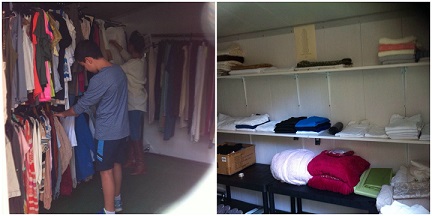
With the help of teacher Bat-Sheva, the students got together and designed the store, inside and out.
They wanted it to appeal to customers in ways that convinced them to come inside, look around, stay awhile, and buy.
Revenue from the Vintage shop was a respectable and appreciated amount. The store is a welcome topic of conversation between parents and neighborhood residents alike. It continues to operate. This makes both owners and customers happy.
As defined in the design stages of the process, the shop benefits school children and needy families among the students, who graciously receive shopping bags, thanks to the store.

Coming steps in the shop's marketing include photographs using students as store models.
Proud of the store venture, students prepared a summary presentation:
The Social Venture: Happy is Healthy
The Social Entrepreneurial Students: Sixth graders Bnei-Bnot Mitzvah at the Kaplan school in Petah Tikva.

Sixth-graders at the Kaplan school who are part of the entrepreneurship course and chosen to work in partnership with students from Houston in the US, put into practice a project within their community.
The students knew about the kindness and the work of the people at Schneider Hospital. It is near Kaplan School and helps sick children. The students decided to light Chanukah candles with these children.
You, too, can donate money to buy and light a candle with the children. Wealthy people typically do this, but anyone who wants to help can take part.
A Jewish school in Houston loved the idea and decided to do the same, and light candles for the sick children who lived near them.
The students planned to use candle lighting as a unique part of their enterprise efforts and to bring cheer to the little ones in Schneider Children's Hospital. They came to the conclusion that the best time to raise money for the candle idea was the day of the Global Entrepreneurship Week ceremony, 2014. At this time, parents and educators could come to the school, watch the ceremony, and donate to the project.
To do this, the students used a team of teachers, including a math teacher who played a clown and a theater teacher. The singer Si Heiman, who teaches a course at the school, and several other teachers also contributed to the candle project.
Some students made cookies with smiley faces. There were funny balloons and enjoyable art workshops related to laughter and more, all offered for a small fee to buy the opportunity to light a candle with the children.
The invitation to the event:
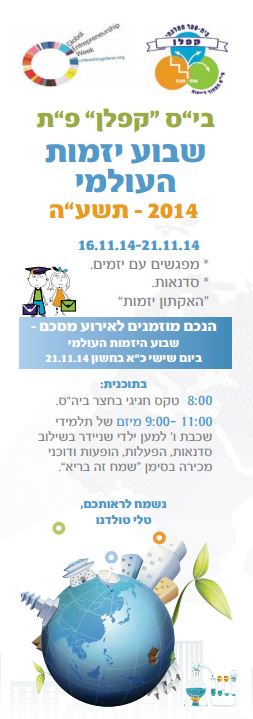
The fundraising day became a happy day of fun and enjoyment during which the students raised the amount needed to light the candle with Schneider's Children.
Ticket sales positions:
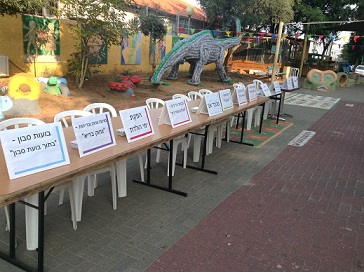
- Balloon activity station
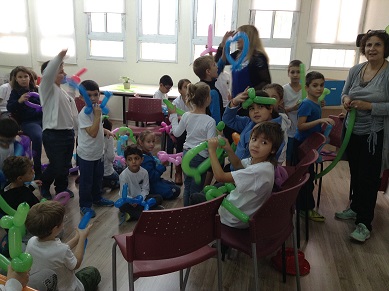
- Soap bubble game station
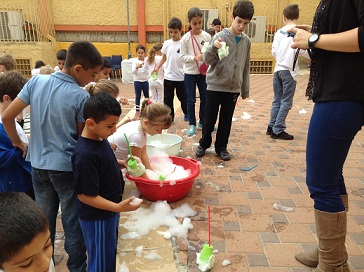
As mentioned, the fundraising was successful, and the students were very excited to light the first Hanukkah candle with the children of Schneider Hospital, in the presence of the hospital director, Prof. Press, who was delighted by the event and requested continued collaboration.
The mayor also attended and lit candles with the children
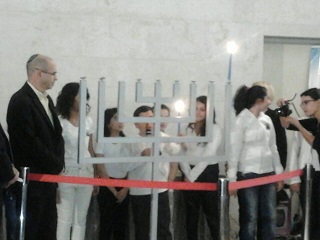
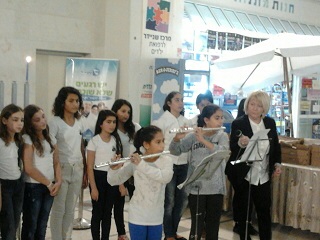
The Activity: Floor Painting
The Young Girl Entrepreneurs: Fifth graders at the Noam Mohaliver school in Bnei Brak.
With the decision to educate for entrepreneurship, the various classes at the Noam Mohaliver School began planning their preferred venture.
Students in the fifth grade chose floor games as a project. Participants had to draw within the schoolyard. The games will supply fun for the students during their breaks.
At the time, they wanted the painting to look beautiful and considered hiring a company to make it happen. The costs were too high, so they decided the girls would paint the floor themselves. They got financing for it from the sales of "sweet break."
The girls rolled up their sleeves and then, busily planned, drew, and painted their masterpiece.

When it dried, they were happy and satisfied with their work and enjoyed playing with the drawings.

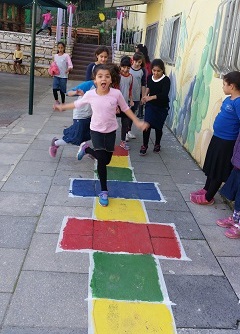
The Product: Tissue Holder Device
The Girl Entrepreneurs: Third graders from the Noam Mohaliver school in Bnei Brak
Third-grade students from the Noam Mohaliver school made a Tissue holder device.
They got the idea from girls who often had to leave the classroom to get tissues. It interrupted their lessons.
The students shared ideas and developed an experimental tissue holder device for their class first. If successful, they would expand and put them in all other classrooms.
In the first stage of the project, each of the girls in the class would bring and use their tissue holder model. Later, they would seek a professional to produce and install a model based on one of their designs or a combination of their prototypes.
The Activity: Puzzles for Nitzan's Children
The Young Female Entrepreneurs: Sixth graders from the Noam Mohaliver school in Bnei Brak
Sixth-grade students from the Noam Mohaliver school volunteer at Nitzan regularly. Nitzan is a school for children with disabilities.
For this project, the students asked for and got a particular place assigned to them where they would work on puzzles together with Nitzan's children.
To raise money to buy the puzzles, the students conducted various sales activities, such as selling their handmade bracelets.
After they managed to raise enough money for the project, the girls purchased the puzzles and, along with the children, put them together, framed them, and hung them on the wall.
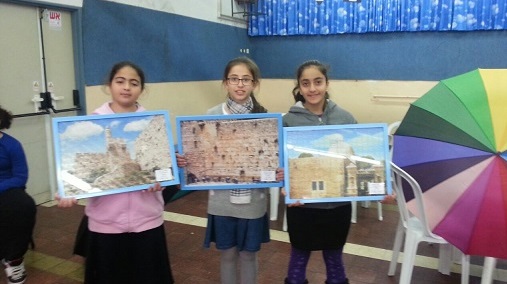
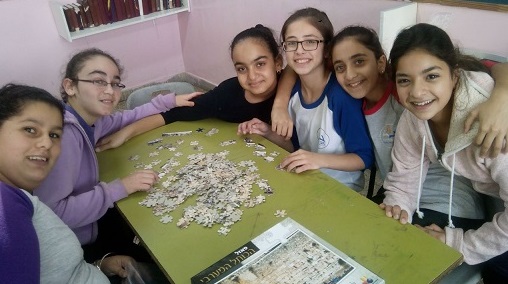
The Invention: Shirt for Any Size
The Pupil Entrepreneurs: Yair, Geffen, and Shani from the Mordei HaGeta'ot school in Ramat Gan
Yair participated in the program for training young students to be entrepreneurs within the school.
The movie "Back to the Future" inspired Yair to create a versatile T-shirt that fits any size.
Yair co-opted with Geffen and Shani. Together they carried out the product.
Read about the process of the project T-shirt for any size.

The presentation:
The project: Student Storage Table
The Young Student Entrepreneurs: Leadership Graduate members of the Mordei HaGetao't school in Ramat Gan
This project was executed by the sixth, seventh, and eighth-grade students from the Mordei HaGeta'ot school in Ramat Gan, who chose the Leadership Development elective course and took part in the children's entrepreneurship program.
The students learned all the steps a developer goes through - concept, progress, and implementation.
The students learned about various examples of ventures. Then they considered ideas for projects they could examine and work on as a team.
They raised and prioritized their ideas, and together, they decided on one project - a Storage Table.
The inspiration for the table came from the television series "Arthur," in which the students on the show have desks with storage compartments.

There is a real need for them today. Some students do have lockers in the school's hallways, but they come at a price. If they forget their notebooks or other supplies, it might cause lesson interruptions.
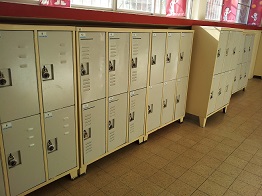
Students face another issue when they choose not to rent a locker. They have to carry their books and bags, which are hard on the neck and back. It might even slow them down.
Storage desks could help solve these problems. They can improve the existing classroom desks and even include hooks so students can hang their school bags. It might also be possible to lock and use them as smaller versions of hallway lockers.
The student group considered the design of these desks and prepared a preliminary sketch.
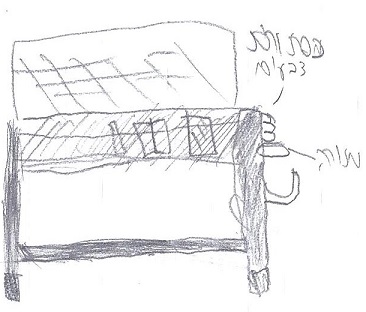
As they planned the table, they included a scenario that involved not knowing which desk belongs to whom, especially on days when they rearrange them. Another problem with the tables might be the possibility of students closing a desk on their fingers.
The project's group came up with doable and straightforward solutions to these possible complications.
Students involved in the storage table endeavor visited other classrooms to present their plans and talk about current issues with the school lockers. Doing so allowed them to share the various benefits of storage tables.
First, they explained the situation as it is today and its pain.

Then they explained their solution and its benefits.

Most of the school students have expressed an interest in replacing the existing desks with the Storage Table as presented by the entrepreneurs.
The students needed and wanted the school to approve their idea. This was up to the school's principal, Ronni Shasha. She supported the manufacture of 15 desks, subject to costs and with a limited budget.
The students shared their ideas with experienced entrepreneurs during a visit to The Complex (Ha-Mitham).
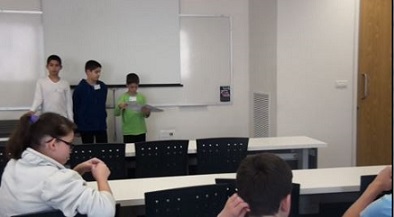
They also got help from Orly Asaf, an architect, and a lovely woman. She was happy to answer their questions. She also created a drawing and sketched it according to their specifications.

The students searched for and found a woodworker named Lior Tzuk. He understood their intentions for the table and demonstrated experience in prototype implementation. The group was pleased with his work and thanked him for his help.
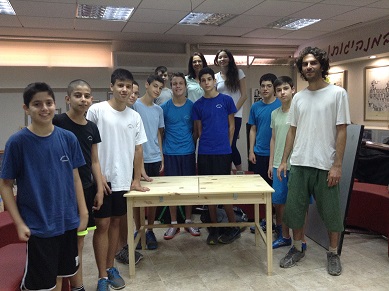
The group placed the table in front of the school, and other students expressed interest in their work. Some wanted to know if they could get one of the desks, others agreed that its time had come.
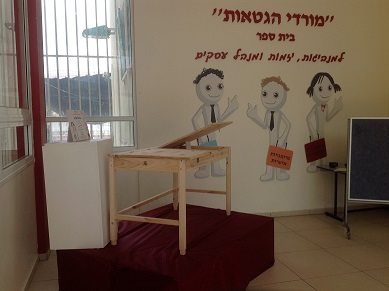
The school year has ended, but if they meet and plan together next year, the students in the group will continue to promote their storage table project.
The Venture of the Young Students: Kiosk Mordei
The Child Entrepreneurs: Members of the Young Leadership from the Mordei HaGeta'ot school in Ramat Gan
Students in grades three, four, and five from the Mordei HaGeta'ot school in Ramat Gan chose the Leadership Development elective course and attended the entrepreneurial program. They considered creative project ideas. Some students implemented these projects with guidance from the teacher, Michal Mamman.
One concept involved creating a school Kiosk.
The original idea was conceived by three young entrepreneurs in the group - Amichai, Ofek, and Ido. Their original dream was to set up a Kiosk and sell sweets to students.
The developers presented their idea to the entrepreneurial leadership group, who asked clarification questions about the venture: how will they build the stand? Where will they get the sweets? If they sell food, then who will prepare the food? Who will be the sellers? When will they sell?.
The students listened to the questions, considered proper responses, and returned for another meeting better prepared.
They drew a model of the Kiosk, as they saw it in their minds.
At this point, the idea of a kiosk was passed along with other ideas to the approval of the school principal, Ronni Shasha.
Ronni loved the idea but explained it could not happen due to the school's PTA authorizations and restrictions.
If you thought this answer would hurt the young entrepreneurs, then you were wrong. The young entrepreneurs were determined to execute the venture, so they decided on the following changes:
To overcome money restrictions, students chose to sell items for "equal money." They also wanted the school's students to get products in exchange for refundable bottle deposits at 0.30 NIS per bottle.
In light of the changes in the venture, which has also become educational with good values for school students, the school principal has approved the venture.
Due to the changes, the young entrepreneurs recruited other members of their Leadership Group who wanted to take part in their Kiosk efforts. Eleven students joined the Kiosk venture.
The group gathered and thought about a name for the Kiosk, raised many names, but once the name Kiosk Mordei came up, everybody expressed enthusiasm and accepted it.
The group met to discuss pricing and items to sell.
They also talked about when they would open and needed marketing.
The children made illuminating signs using their slogans to announce the Kiosk's opening.
Every morning for two weeks, the developers came to the classrooms and reminded the students to bring bottles.
At first, the bottles came in slowly, but after a few days, students began arriving with full bags.
Every day at recess, the student entrepreneurs collected the bottles near the schoolyard stage.
In exchange for the bottles, students received coupons with an illustration of the item they purchased. They were asked to bring the coupons when the Kiosk was running. By handing over their coupons, they would receive the product they bought. This way, the entrepreneurs could know how many products to buy, and of what kind. This helped avoid financial loss.
Students collected the bottles in a room and classified them into large bags - 180 bottles in a bag. We then took the bags to the nearest branch of the ELA recycling organization and received the deposit.
To help with the success of the Kiosk, we recruited teachers. We sent an email to all teachers and asked if they could allow child entrepreneurs to enter their classrooms in the morning to publish the news about the enterprise, and encourage other students to bring bottles.
One of the teachers at the school wrote an email about the success of collecting the bottles. She wrote: "I am sure the Kiosk will be successful. The children in my class shop with coupons in quantities that would allow them to eat popsicles nonstop for 24 hours."
Students have booths through which they sell. They had three stalls in the school and made a stand for each product - popsicles, sandwiches, and drinks.
On the sales day, the entrepreneurs arrived early. They prepared sandwiches using fresh rolls, which the teacher, Michal, bought. They put on tag names, got the pre-ordered popsicles, and were eagerly waiting for the moment sales would begin.
The entire school was excited about the sale. Teachers directed students to go to the kiosk stands in an orderly fashion. They did this one grade at a time. This enabled the young entrepreneurs to serve everyone comfortably.
At the end of the sale, the entrepreneurs gathered in the teacher's room and conducted a summary of their venture.
Teacher, Michal summed up the venture Kiosk Mordei this way:
The children have experienced what it's like to be independent entrepreneurs.
They may never forget this experience.
My hope is, the children have learned what it's like to be an entrepreneur who can initiate projects themselves without fear.
There is no doubt that they will be leaders because they have experienced it, and they understand that it is not as scary as they thought.
Thanks to everyone who helped out and supported us behind the scenes.
May there be many more such ventures!
This presentation summarizes the Kiosk Mordei project:
The Venture in the School: Mind Games
The Entrepreneurial Kids: Members of the Young Leadership in the Mordei HaGeta'ot in Ramat Gan
Teacher Michal Mamman led a Young Leadership course for students in grades three, four, and five. They initiated a day of mind games, guiding students in the first and second grades.
They used the mind games from Lior, a mind game guide.
Lior guided the entrepreneurs, teaching them the game in advance, and explained to them the importance of being a guide.
To differentiate the entrepreneurs from school children who came to play games, and to highlight the entrepreneurial being part of a team, we use name tags.
Entrepreneurial leaders arrived early in the morning and organized the games. They waited for the students to come to the appointed areas.
The teacher summarized the event:
The children had a great time. Everything was neat and organized. The young leaders worked as a team.
They played with the children, which made them feel like leaders.
Student entrepreneurs now have experience with the joys and difficulties of training around small children, some of whom did not cooperate.
It was nice to see how they managed to outdo themselves, take care of the children, and still find several ways to enjoy themselves.
It was amazing!
The presentation illustrates the process of realizing the venture's success:
The Initiative of the Students: A Play Room
The Young Entrepreneur Members: Members of the Young Leadership group in the Mordei HaGeta'ot school in Ramat Gan
A group of third, fourth, and fifth grade leaders under the guidance of the teacher, Michal Mamman, thought of ideas for ventures, and after a process of thinking, asking questions, and getting feedback, they implemented some of the plans.
One idea was a playroom with board games in the classes to benefit students. The venture will allow pupils to play with them during recess.
The venture development process in this presentation:
The Operation: Costumarket - Costumes Sales
The Child Entrepreneurs: Students in the Democracy Junior High School in Lev Hasharon
A group of seventh, eighth, and ninth-grade students who participated in the entrepreneurship course in the junior high school of democracy, Lev Hasharon, set up a venture to sell costumes at school.
The students planned, marketed, and implemented the venture with success.
The group of young initiators contacted students and teachers to donate saleable costumes no longer needed.
Those who provided costumes received a credit to purchase another outfit.
See the project stages in this presentation:
The Initiative: Barbari - Healthy Bar
The Pupil Entrepreneurs: Four, five, and six-grade students, participants in the Entrepreneurship Course for Kids at the Amirim school in Binyamina
Barbari - A healthy bar venture, that was the children's final project.
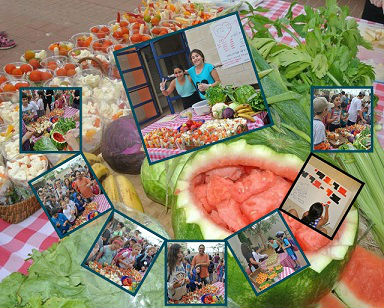
Vision: accessibility of healthy lifestyles for children through selling fresh, sweetened vegetables and colorful fruits. The venture's message was that fruits and vegetables could be a welcome alternative to today's processed snacks.
During the work plan:
- The children dealt with recruiting, organizing, and selecting items
- The children prepared, served, and sold the items
- The kids were engaged in branding and marketing the stands
- The children set up the stands.
- The children priced the products and considered the business model as part of carrying out the business concept they learned as they studied entrepreneurship.
It was tasty and healthy!
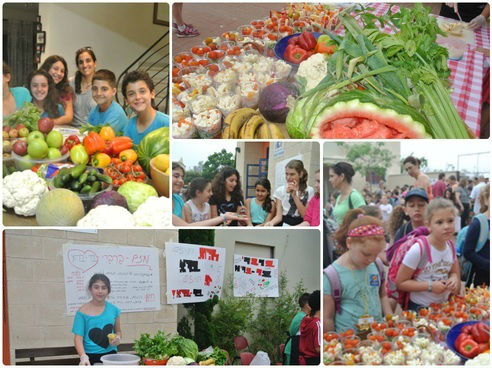
The Social-Business Venture: Costume Sales
The Kid Initiators: fourth graders who participated in the Entrepreneurship for Kids Program at the Brenner elementary school in Givatayim
The Young Makers: Third, fourth, and fifth grade students who are members of the Leadership Development classes at the Mordei HaGeta'ot school in Ramat-Gan
The Entrepreneurs: Young students from the Tlamim school in Be'er Ya'akov
The Initiative at the Brenner School in Givatayim:
fourth graders took part in the lessons on entrepreneurship and carried out the project for the holiday of Purim.
The children asked the school students to bring costumes and accessories for Purim that they no longer needed. In return, the students received coupons entitling them to pick an outfit and accessories at the fair.
The response was impressive, and beautiful costumes were collected, donated, and offered for sale at the school's fair.
Collected monies were intended to establish a radio station at the school. The remaining costumes and props were donated to needy families.
The intention was to combine business entrepreneurship with social entrepreneurship.
The Initiative of Students at the Mordei HaGeta'ot School in Ramat Gan:
Third, fourth, and fifth grade students in the entrepreneurial leadership group at the Mordei HaGeta'ot school in Ramat Gan, guided by the teacher, Sarit Alfital, came up with the idea, planned it, and carried out the costume fair.
To ensure success, the children asked the students to bring costumes they no longer needed and in good condition. In return, the students got coupons for dresses and accessories at the fair.
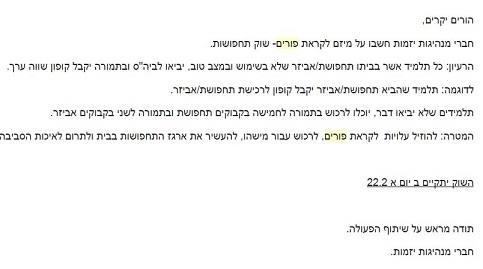
The school newspaper published an article about the fair:
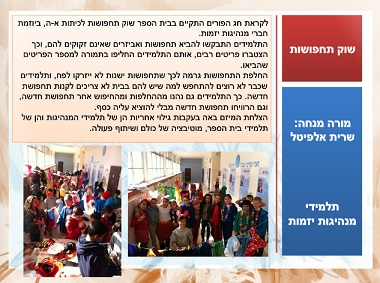
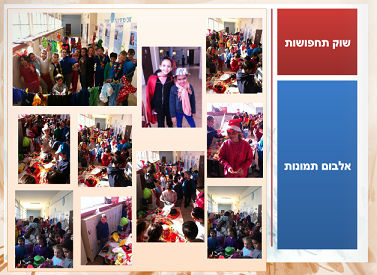
The young entrepreneurs concluded the venture:
"We thought of a Purim holiday-related venture. We didn't have any ideas and decided to hold a costume fair aimed at recycling and reuse, as well as reducing the cost of costumes.
We split into teams, each team was responsible for a grade, and each day, we moved between classrooms to collect donations for costumes, accessories, and bottles.
Whoever brought a costume or prop would receive a coupon of equal value. Those who did not bring anything could get a ticket against recycling bottles.
During the following days, as we walked between classes, we discovered there was not much cooperation, and we were anxious that our venture would not succeed. But, as the days passed, and the date of the fair was coming, the students' cooperation improved."
On the day of the fair, the entrepreneurs arrived early at the school so that they could arrange things. Sarit, our teacher, brought clips to hang the costumes. We also organized the desks and put our accessories in place.
Representatives handed out coupons to students as they arrived to attend the fair. As they came, we were very stressed because some costumes were scattered across the floor. Although it took time to organize, we were happy, full of laughter, and enjoyed seeing children buy and play with themselves.
At the end of the fair, some costumes and accessories were left over. We donated them to the first grade so they could have a box of costumes to play with during recess. We also gave some accessories to the theater teacher, Salit.
"A week later, we met with Sarit. She said the teachers referred to the fair as a success, and their students enjoyed it very much.
We are proud of ourselves for our ability to work as a team and help students choose appropriate costumes and props."
The Implementation at the Tlamim School in Be'er Ya'akov:
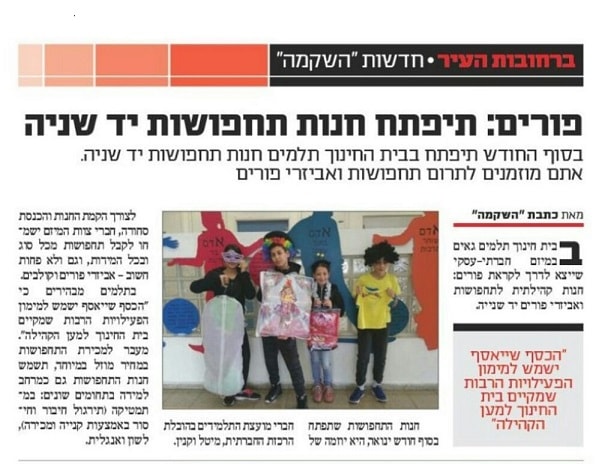
Students from the Tlamim school in Be'er Ya'akov prepared in advance for Purim. To encourage residents to donate accessories, costumes, and hangers that the children will sell, they published a PR article in a local newspaper. The report stated they would use the proceeds to fund school activities that benefit the community.
The project will also serve to help children learn math, language, and English.
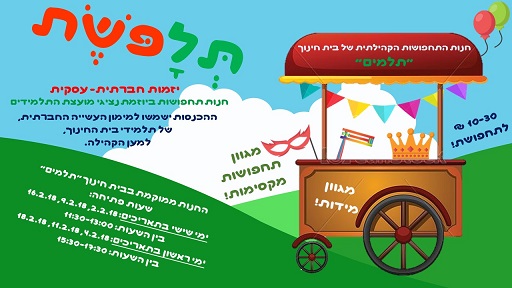
The Venture: Dog Adoption Day
The Young Initiators: fourth graders, Entrepreneurship for Kids Program participants from the Mordei HaGeta'ot school in Ramat Gan
Seventeen fourth graders participated in the children's entrepreneurship program during the school year and raised ideas for initiatives. They chose to focus on how they could promote and implement Dog Adoption Day.
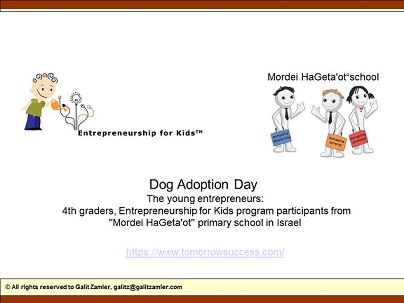
The young entrepreneurs, accompanied by the science teacher, Shirly Ben-Yaakov, created a business and marketing plan for the enterprise. They defined and divided the roles while also working as a team.
Geva Zin brought dogs needing adoption from his kennels and accompanied the child's entrepreneurs. Cooperation was successful.
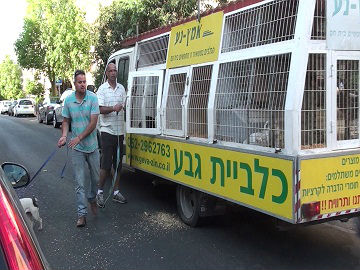
After they planned the entire process, students met with the school's principal, Ronni Shasha, described their plans, and asked for approval to begin. The project was approved and scheduled for Friday in early June in the morning.
Upon approval, students marketed Dog Adoption Day in various ways to students and parents.
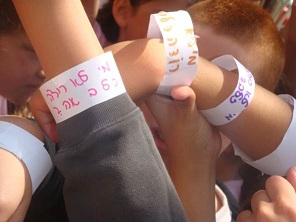
Students dressed in white shirts and put on white hats and tags. This way, they distinguished themselves as the entrepreneurial team responsible for the day of adoption, which was a big success with four dogs adopted into new homes.
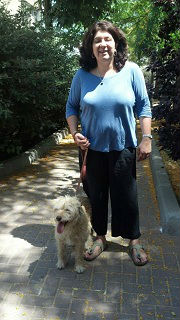
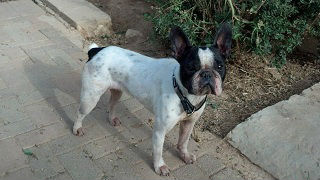
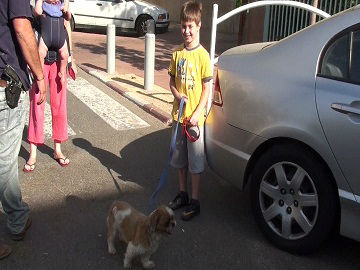
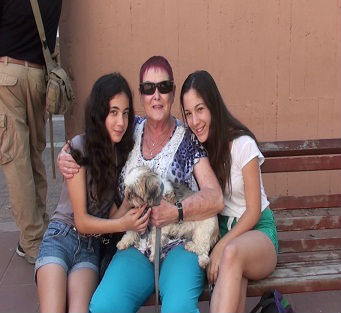
Read more about the Dog Adoption Day steps taken by the student entrepreneurs.
The Kids' Venture: Pitot in the Taboon
The Children: A group of fifth graders who participated in the Entrepreneurship for Kids Program from the Psagot primary school in Kiryat Bialik
Fifth graders from the Psagot School in Kiryat Bialik split into groups. Each group set up a project.
Nurit Evenshietz, a teacher of entrepreneurship in the school, explained that one group planned and carried out the Pitot in the taboon project.
Entrepreneurial students employed their parents to help bake the pitot. They purchased a partially baked pitot. They then put chocolate and extras on it, such as colored candies.
The student prepared a price list to present to buyers.
As the day to implement the project came, the reaction to the opportunity to buy hot pitot with chocolate spread was overall positive, and the taboon project was a real success.
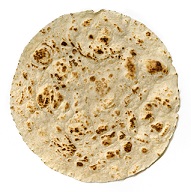
The Kids' Initiative: Makeup and Nail Polish Stands
The Girl Entrepreneurs: Fifth grade participating in the elective entrepreneurship course from the Psagot primary school in Kiryat Bialik
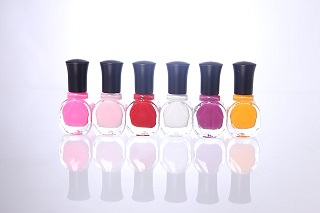
The Psagot school in Kiryat Bialik chose fourteen students from fifth grade to participate in the entrepreneurial curriculum.
Students were divided into groups, and each group chose an idea to bring to realization.
A group of students proposed setting up a makeup and nail polish stand for Purim.
The purpose of the project was to create an atmosphere of happiness and gain experience from setting up the venture.
After processing the concept and design, the group began their preparations. The young girl entrepreneurs asked school students to contribute nail polish and makeup, and purchased art and other items.
After they prepared and organized the project, they launched it the week before Purim. The group set up tables and chairs for the stand. The girls would apply makeup for the school students during the whole week's recess.
The student put a lot of thought into choosing a name for the venture - "Lakipur." This name in Hebrew reflects the essence of the project - nail polish and makeup. It also highlights Purim because it contains the word PUR.

To include different options for the makeup and nail polish, students set a price for each option and placed it near the stand.
In conclusion, teacher Nurit Evenshietz, who accompanied the student groups, indicated that the students flooded the stands for makeup. Some refused the nail polish and instead decorated with nail art.
The girls were excited, and the project was a success.
The Initiative of the Kids: School Coffee Shop
The Young Founders: fifth grade group from the Psagot school in Kiryat Bialik
This page includes several enterprises created by students from the Psagot school in Kiryat Bialik.
The entrepreneur students are fifth grade who participated in the elective entrepreneurship course for children under the supervision of the teacher and school pedagogic coordinator, Nurit Evenshietz.
One group established a coffee shop for the parents' day evening.
The founders planned what to sell and what their coffee shop would look like. Parents helped make cakes for the event, and students sold them alongside raspberry juice.
The Coffee shop was a success, and all profits were for the benefit of the school.

The Initiative: Community Website
The Young Tech Entrepreneurs: sixth grade students from the Kaplan school in Petah Tikva.
Twenty 6th-grade students from Kaplan School, who were selected to participate in the entrepreneurship program, decided to create a technological venture - a community school website aimed at promoting mutual assistance among all members of the school community."
planned the establishment of the venture, and worked to promote it among students and parents so they would understand the website's value and its benefit to students and their families.
As the students learned during their visit to Wix and in their sessions with Galit Zamler - it's best to start small and grow over time.
"We deserve congratulations! - A new website was born at Kaplan."
The idea excited the young team of Kaplan entrepreneurs.
The goal: Help the school community as a whole
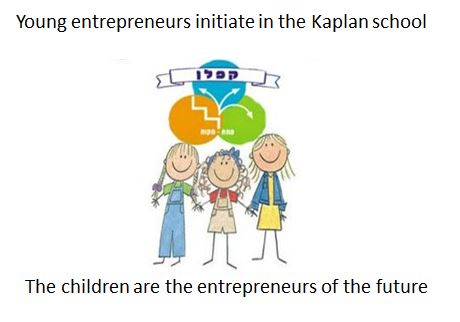
The Children's Venture: Food and Candy Stand
The Kids: 12-year-olds kids Or, Ziv, Tom, Omer, and Barak
Children taking part in the entrepreneurial lessons for kids set up a stand with food and sweets for one week at the center Sde Boker, Givatayim. All details - in the video here:
The Initiative: A Stand for Selling Fruit Juice
The Young Founders: Fourth and fifth grade students from the Psagot primary school in Kiryat Bialik
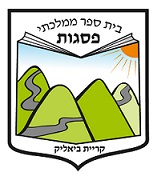
At Psagot school in Kiryat Bialik, 14 selected students from the 5th grade are participating in an entrepreneurship elective course. The students divided into groups, and each group chose to establish a venture.
Four students decided to set up a stand to sell natural juices.
Since the students learned in the program sessions what the stages are for planning and establishing a venture for it to succeed, they acted according to an organized plan, which also included: defining goals, preparing a survey and checking with school students what natural juices they would want to drink, coordinating a date with the deputy principal, checking what is needed to establish the venture and where they would obtain fruits so they could meet the venture's costs.
Additionally, after checking the costs of purchasing fruits and the cost of preparing one cup of juice, they decided on selling prices to ensure a profit and prepared price lists.
It was decided that the students would operate the juice stand during the active break on Tu Bishvat.
The survey revealed that there is a preference for fresh orange juice and lemon-mint juice.

The students got oranges and lemons from three sources; local stores donated some. The majority were brought to the school by the students before they established the enterprise. The young developers also purchased some.
They purchased glasses, straws, and mint. They brought the juicer and jars from home.
The students labeled the stand and made a price list: 3 NIS per glass of orange juice, 2 NIS for a cup of lemon-mint juice. On the trash can, they wrote "I eat garbage".
The young entrepreneurs wanted to feel responsible and independent. Although teacher Nurit Evenshietz was available to them, they set out to do things themselves.
To cope with a large number of students who'd come to purchase the natural juices, the student entrepreneurs asked parents to help. At 8 a.m., they commenced squeezing. This gave them enough liquids during the break and helped them meet the students' demands.
In the end, the students talked about their experiences and learned lessons. They agreed that their venture was a success. They managed to sell without making a mess. They were delighted by the incomes, which amounted to 645 NIS, and the profit amounted to 560 NIS. This amount was kept for the benefit of future ventures.
The Initiative: Kiosk at the School
The Kid Founders: Sixth and fifth-grade students from the Moreshet Moshe school in Ramat Gan
A group of fifth-graders, who participated in a weekly entrepreneurship lesson, established a kiosk venture at the school.
The children planned the kiosk's construction, prepared a detailed business plan, and set goals and objectives. They divided roles and were all ready to run the venture.
The Initiative: Change the School Bell's Ring
The Initiators: A group of seventh grade students from the Hazav Middle School in Alfei Menashe
The entrepreneurial group: School students from the Tze'elon school in Be'er Ya'akov
The children behind the idea: Students from the Alumot school in Tel Aviv

The Application to Alumot School
It should be noted that this is the first year that the Alumot school students took part in the program for entrepreneurial skills development. Within three Hackathon sessions, they learned, internalized, and executed several projects.
As part of these events, the student entrepreneurs were hosted in three schools from various cities: Kaplan in Petah Tikva, Yad Mordechai in Bat Yam, and HaShalom school in Mevaseret Zion.
These visits revealed that each school's bell rang differently. Thus, they raised the idea of replacing the standard ringtone at their school with a song. Teacher Orna Ya'akovson encouraged this project.
A ringtone replacement announcement to teachers and students was broadcast over the school's radio.
In a box placed in the school, each student got to propose an idea to replace the current ringtone with a Hebrew candidate song. They also had to explain why they chose a particular song.
The next step was to vote. After prioritizing and reducing the overall number of songs, the final songs were played, and through a democratic electoral process, the chosen song received the most votes.
The implementation in the Hazav junior high school
Participants in entrepreneurship studies, along with youths from the Hazav middle school in Alfei Menashe, shared several innovative ideas.
One group chose to change the school ringtone.
Accompanied by parents, the students planned the process.
Students sought approval for the replacement from the school's management and student council. They also considered issues of song copyrights.
The class that collects the most bottles, which are for another venture group, will choose the songs.
Parents who accompanied the developer students helped do this through school meetings and a group page that they opened on Facebook.
The application at the Tze'elon school
The Tze'elon school composed an original anthem that highlights the uniqueness of the school's entrepreneurial focus.
Since we changed the ringtone, it now plays the school's Anthem.
The Initiative: Recycling Bottles
The Doers: seventh grade student group from the Hazav middle school in Alfei Menashe
As mentioned above, the participants in the EFK program from the Hazav middle school raised interesting enterprise ideas.
One group chose a business venture, which includes financial profit. It involves collecting recyclable bottles and selling them directly to the recycling corporation, ELA.
It challenges the young students to collect as many bottles as they can, and engage school children.
To do so, they joined a group of entrepreneurs who decided to change the school's ringtone and held a competition between classes.
The grade that collected the most recyclable bottles chose the songs.

The Initiative: Decorating School
The Children with the Idea: seventh grade students from the Hazav Middle School in Alfei Menashe
The idea to decorate the school came from the students participating in the entrepreneurship studies at the Hazav school in Alfei Menashe.
When the students sat down to rank the ideas for projects, it seemed that the decorating idea was not high on the list.
The students discussed various aspects, concerns, and benefits of the enterprise with the facilitators.
The talks motivated the students and helped them better understand that entrepreneurship is not just for material gain, but can affect the environment, bring enjoyment, and satisfaction.
Following the discussion, they decided to decorate the school.
Entrepreneurship is not only for adults.
As you can see here, there are children and youth entrepreneurs, some business entrepreneurs, and some are social entrepreneurs.
If you also have an idea and would like to share it with us, feel free to contact us and let us know about your initiative. Make sure to attach photos, and we'll put you on our site.
The Initiative: 16th Birthday
The Teen Entrepreneur: Itay Perlman, 16 years old
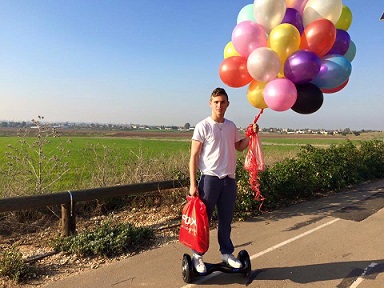
As Itay's birthday arrived, he decided he didn't want to celebrate it as they do in the US. He wanted to celebrate his special day differently.
His choice touched my heart, so I asked him to tell me more.
In entrepreneurship classes, we learn to be aware of the environment and identify opportunities. This is what Itay did.
His Facebook page revealed that a few days before his 16th birthday, he had an accident and had to stay in the hospital for five days. During this stay, he saw a 16-year-old amputee.
At this point, Itay decided to celebrate his birthday with sick children in hospitals. He believed it would make them happy.
He used his own money to buy candies. When people heard about what he was doing, they appreciated his intentions and decided to help. His goodwill revealed a beautiful side of the caring Jewish culture.
Itay went between the children's departments in the hospital. He gave sweets to the sick children, and that pleased them very much.
Itay felt satisfied with the whole process of implementing his idea. The ability to harness people and then spread the initiative across various channels helped Itay understand that he can make a difference.
This encouraged him to inspire other children to celebrate their birthdays this way.
The Initiative: Growing and Selling Silkworms
The Initiator Boy: 11-year-old Barak
"Three years ago, I bought some silk larvae. I wanted to watch the process of its development. At the end of that process, I had a lot of silkworm eggs and decided to keep them for the following year.
I kept the eggs in a box in the refrigerator for a year. After the Passover holiday, I took them out of the fridge and put them in a shoebox, making sure to pick and feed them mulberry leaves, so they'd have something to eat as soon as the eggs hatched.
I created another generation of silkworms, but since I had fewer than the year before, I decided not to sell them. This year, a lot of butterflies laid eggs, so in the third year, I had a lot of silkworms."
You can see in the picture all the silkworms.
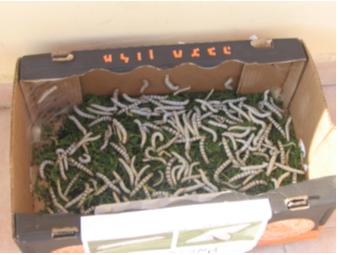
"Now, as I have so many silkworms, I decided to sell them. I based my decision on the entrepreneurship course I took, which taught me ways to identify opportunities. I met many children who wanted silkworms and checked the selling price of silkworms at a local store. I then decided to sell each worm for 2 NIS. People who purchased three silkworms received a discount and paid only five shekels.
To do this, I went to a garden near my home with a box of larvae. I asked: 'Who wants silkworms? I was encouraged when I earned 37 NIS on the first day. And I continued to go to different gardens to sell my worms.
To motivate children and parents to buy, I sell the silkworm larvae in disposable plates and give my customers enough mulberry leaves to hold them over until they can pick their own.
In conclusion, making money on my own was fun, rather than asking my parents. By participating in the young entrepreneurial course, I learned the differences between supportive and non-supportive environments. This helped me understand what I'm up against and still continue the venture.
Some people said, "Yuck, the silkworms are creepy." Others encouraged me and said I did well. Some parents thanked me for helping them teach their children about the life cycle of silkworms. Others believe selling silkworms was a bad example of entrepreneurship."
Learn more about growing silkworms.
The Initiative: Establishing an Entrepreneurship Center
The Teenager Entrepreneur: Rotem Laniado, 11th grade
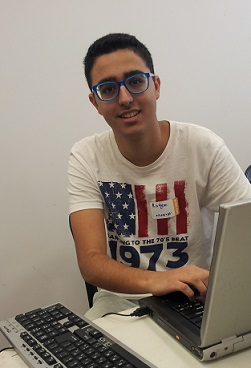
Rotem attends the Alon High School in Ramat Hasharon and set up an entrepreneurship center called Together there.
Teenage students visit the center during recess and after school. They use this time to discuss project ideas and present them to friends for feedback.
Besides, Rotem organizes lectures on entrepreneurship. Some are at the center, and some are outside the school, including Google Campus.
The Entrepreneurship Center has been around for a year, with the encouragement of the school principal, although it is a school that specializes in art.
Rotem and his friends have managed to combine both entrepreneurship and innovation. Because of this, the students learned to use Photoshop. Students in the photography course were invited to hackathons to take and edit videos and photos. Music students developed a guitar with a tablet.
To encourage other young people to come to the Entrepreneurship Center, Rotem went to a nearby middle school in the city to tell other students about the center's activities. He invited them to join.
The school's director likes the center initiative and organized a meeting to discuss it with the Ministry of Education and the municipality.
This is the Center's symbol

Rotem attended the Global Entrepreneurship Week 2014 as a guest lecturer for parents and students.
The Initiative: Building Websites
The Talented Boy: Sixteen-year-old Victor
The connection with Victor was formed following a discussion he wrote on the Cafe de Marker forum.
Victor wrote: "What do you think about young entrepreneurs under the age of 18? I am a young entrepreneur who doesn't sit still and constantly dreams of new opportunities and possibilities.
I participated in various frameworks, such as young business leadership, and more.
Through these frameworks, I met startup founders and CEOs, and even visited the offices of companies like Intel.
While my peers struggle to find work, I work on new ideas. Is this good, or should I come down from the clouds and be like everyone else?"
I reached out to Victor and asked him to elaborate and tell me about his initiative:

The first client found me on a social network where I posted that I was ready to build a website for free for marketing purposes.
When I started working with the first client, I gained a lot of self-confidence, and I told myself that I was on the right path to success.
My close environment supports me and even invests efforts to market me.
My aspiration for the future is also my business vision: that every small business (even a grocery store) will have a website, and of course, that my venture will succeed.
My recommendation to young entrepreneurs is to ignore the rebukes of those who belittle, to focus on positive reactions, and draw motivation from them to persevere until success.
The Initiative: Computer Games
The Young Inventor: Nine-year-old Jonathan Shiloh
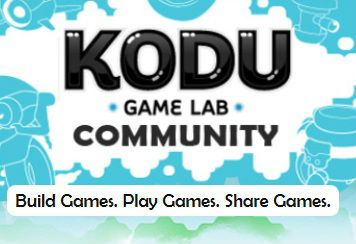
Nine-year-old Jonathan loves computers and understands computer games.
Jonathan's father works at Microsoft. At one point, Jonathan planned a computer game with him. Microsoft was looking for interesting ideas for community ventures. This created a collaboration between Jonathan and Kodu's software development.
Kodu allows adults and children to design visual and friendly games, which do not require knowledge of a programming language.
Jonathan defined rules and measures that can be used in game development. It is a skill he acquired from playing computer games.
Jonathan and his father presented Kodu during an exhibition held in April 2012 and sponsored by Microsoft for the developers' community in Israel. Everyone appreciated it.
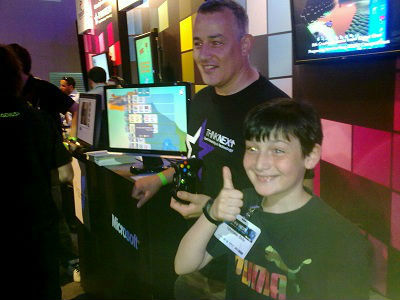
The success of Kodu has already been documented, and one example is that school children in Kiryat Ono use Kudo software to develop computer games. (April 2012)
The Activity: Doggie Sitter
The Kids: 14-year-old Yagel and nine-year-old Hadar
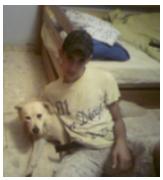
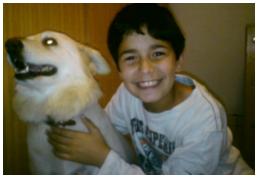
Yagel explains:
"I take my dog, Chiquita, for daily neighborhood walks. Once, when I was out for our walk, a neighbor saw us and asked if I would be willing to walk her dogs for pay.
She has four dogs: Puff, Tanni, Jook, and Nicky.
It's been like that for almost a year that we get to take the dogs out, and we already bought a nice ring for Mom's birthday with the money we earned. She encourages us to continue as it builds responsibility."
Child entrepreneurs can learn more about the needs of dog owners here: they need people to walk their dogs at least once a day or once a week. Most like to hire people they know personally. It is essential to understand that this job is only suitable for people who actually like dogs.
Another boy, 10-year-old Roy, wanted to be a Dog Sitter. His mother said:
"Roy loves dogs."
He decided to care for them during his summer vacation. He asked the owner of the dog hairdresser close to his home to hang a sign he made that talks about his new venture.
Below is Roy's Ad:

"Do you spend a lot of hours away from home? Do you need a vacation?
My name is Roy. I am 10 years old, and I love pets.
Let me help you take care of your dog.
I will take it outside, play with it, and brush and feed him.
Call me. Let us talk."
Roy's ad helped him get a job with a dog named Bilbi - a tiny four-month-old poodle.
Roy uses his acquired knowledge to train dogs, including Bilbi. He trained the dogs to obey him when he says: 'Sit', 'Come', etc.
Roy loves the dogs and makes his own money.
Here is a picture of Roy and Bilbi:
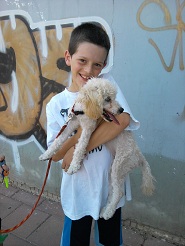
The Initiative: Selling Old Toys and Games
The Business Children: Omer and Noa, ages 10.5, Guy, Amir, and Ido ages 10
The children sell their Items at the local mall. They include board games, toys, and Gogosim. They also sell brochures and CDs.
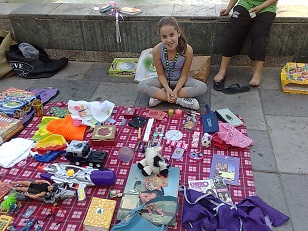
Noa said, her mother and sister have birthdays soon, but she did not have enough money to buy presents. She decided to sell the items she no longer needed and use the money to buy gifts for them. She recommended that other kids do the same.
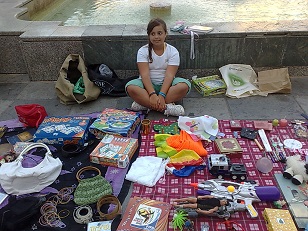
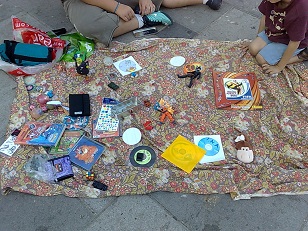
Guy said that he earned 40 NIS in one day. He decided to save the money instead of rushing to spend it.
The Initiative: Braiding
The Idea Creator: 10.5-year-old Omer
Omer, who sells games and toys, is also a talented young entrepreneur.
Last year, Omer asked her mother to purchase for her small rubber bands and a particular hairbrush. She borrowed the stool that her grandmother uses in the shower. Omer created a price list labeling the braids according to their types. This made it easier for the girls to know beforehand the cost of their braids.
Omer set up her area to work in the garden next to her house. The girls sat on the stool, and she braided their hair.
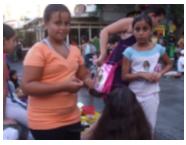
Her initiative quickly became ahead and created long lines. So, the girls wanted their hair braided. Omer worked until 20:00. She earned a significant amount of money.
Omer said, "I got the idea to braid girls' hair during a trip to Eilat. While being there, I saw women braiding and getting paid to do it."
Omer's mother said, "Omer has self-confidence and charisma. She is creative and practical, so she is successful. I support and encourage her to do her best."
The Initiative: Camp for Young Children
The Girls Behind the Project: Cherry, 12, and Nehemiah, 15
Cherry and Nehemiah live in Bnei Brak. They usually babysit in the afternoons. Both identified a need that mothers had to have their children cared for. On fasting days, children don't go to kindergarten, and fasting mothers struggle to care for their children and prepare meals.
When Sherry and Nehemiah recognized these needs, they spoke with the mothers and offered to send their children to a one-day camp for a small fee.
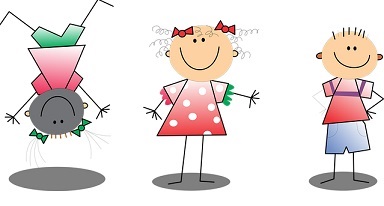
Once news of this spread, 20 other children signed up.
Given their success, the girls decided to hold the camp, even during vacations. They shared the initiative with the mothers, hung posters in the streets, and recruited two more friends to help them. During holidays, children, ages four through nine, attend the camp.
The young entrepreneurs believe that although it is hard work and you have to plan each day's activities for the children along with preparing meals for them, it all pays off. They don't have much to do on their vacations anyway, so they not only babysat their younger brothers and sisters, but they also helped their mothers and earned money.
A young girl who initiated a camp: 12-year-old Eden

Participants in Eden's camp
Hanna Beit Halahmi writes for the Post magazine. She wrote about the initiative of a 12-year-old girl, Eden Mendelovich, who ran a summer camp for children.
Children who are considering setting up a similar venture are invited to learn from Eden.
The Initiative: Theatre Plays for Kids
The Initiator Boy: 11-year-old Itay
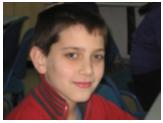
Itay wrote: "It has been five years since I attended first grade, but even then, I held theatre plays.
I thought of the idea by considering what I love to do. I thought it would be fun for children, and it had not been done before at the school.
I did plays in kindergarten with my friend Evyatar. I asked him if he would want to continue with the idea for another year. He agreed.
We decided to do a play at the end of the year and thought about a subject. We eventually decided the play would be about teachers who taught us that year.
A year later, we decided to continue, but this time, we concluded we should present it more than once, and towards the holidays, or for other special days. We needed more players for the show to be entertaining, so we held auditions to select the right players. They had to be good enough to play their parts.
There were many things to do before the show. First, we had to ask permission to perform. We also needed to plan the show and organize the costumes and accessories. We used props from home.
Our target audience: students in our class. I believe our classmates enjoyed our play."
The Initiative: Selling Tropiot
The Child Behind the Business: 13-year-old Ariel
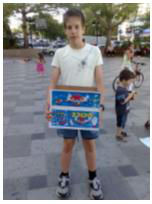
Ariel, who also participated in the E-ship kid's program, said: "I watched as children sold various types of toys and old games. It reminded me, last year, one kid succeeded by selling Tropiot. He is not here this year, so I decided I would sell Tropiot. I asked my grandfather to buy a box at the market. It is cheaper there. I sold each Tropit for half a shekel.
This is the first time I sold Tropiot, and within 2.5 hours, I managed to sell almost all of it. A lovely woman asked me about the price of a Tropit. I told her the cost was half a Shekel; she paid me 5 NIS and told me to keep the change.
I enjoyed the sale and met many people who came to buy from me. I was not even afraid to walk around amongst the children and ask them if they wanted to buy a Tropit."
The Initiative: Design and Sell Jewelry
The Young Entrepreneur: 11-year-old Elamar
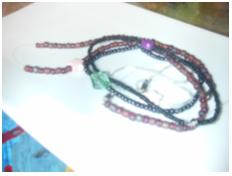
Elamar wrote:
"I participated in the EFK program. It made me want to earn a living.
I thought, what can I do? Then I got an idea: make bracelets and necklaces and sell them.
My first piece did not come out well. My second piece was not perfect, but it was better. My third piece was amazing! I can now say, I make jewelry, and I sell it."
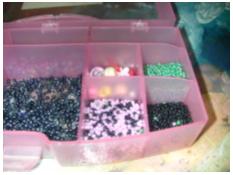
Elamar answers these questions:
Who encouraged you most?
Answer: My parents.
What made you decide to make bracelets and necklaces?
Answer: I believe I could make beautiful jewelry. I also had the needed materials. It is pretty straightforward and can turn into a more significant jewelry business.
How did your first sale go?
Answer: My first sale was both fun and quite exciting. Believing I would succeed, I did not give up.
The Initiative: Collect Bottles to Recycle
The Kids Behind the Venture: 16-year-old Shlomi and 10-year-old Tomer

Shlomi, Tomer, and another friend collected bottles for a deposit.
The Initiative: Birthday Party Entertainment
The First Entrepreneur: 14-year-old Adaia

Adaia Gal operates children's birthday parties. Although the initiative began by chance, Adaia believed it was a good idea and kept it going.
The Initiative: Artwork Sales
The Business Girl: Nine-year-old Lee Keren

Lee Keren did not watch television for 100 days. During this time, she learned from others what entrepreneurship is and who an entrepreneur is. She learned the difference between successful and failing entrepreneurship, negotiation, public relations, as well as advertising.
Along with those things, Lee discovered how humor and optimism could help a person achieve their goals.
Lee loves art. She wanted to make her hobby into a source of income. You can read the article on the ET ZE site.
The Initiative: Purchase Products on eBay to Sell in Israel
The Business Boy: 12.5-year-old Or
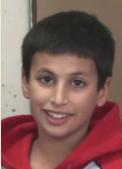
Or, took part in the after-school entrepreneurial activity. On the one hand, Or loves computers, and on the other hand, he has a well-developed commercial sense and is interested in entrepreneurship. Combining these factors led him to browse the eBay site, where he discovered iPod covers with Angry Birds game characters. Compared to their price in Israel, the prices on eBay were low.
Or asked his father to purchase ten covers. When considering the cost of the covers, Or wanted to satisfy the customers and also benefit from his venture. He knew about the high price of similar iPod covers in the country, and he decided to sell his for three times the price he paid on eBay. He also invited his friends to purchase the product.
Before the covers arrived in Israel Or had two orders, he and his clients purchased the iPod covers at less than half the price and enjoyed his enterprise.

source: Ebay site
The Initiative: Orange Juice Stand
The Team Members: 12.5-year-old Tomer and 13.5-year-old Ohad
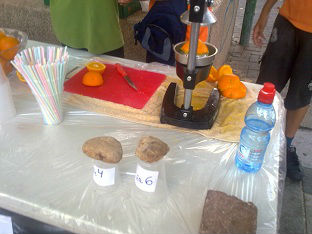
Before Summer vacation began, Tomer and Ohad considered how they could busy themselves and earn some money.
Tomer came up with an idea to create an Orange Juice stand near the local mall to reach parents and children.
Tomer and Ohad said: "During school, we planned and calculated how much the oranges, disposable cups, straws, and garbage bags would cost us, and accordingly we decided on the price: for a small cup of juice - 4 NIS and for a large cup - 6 NIS."
Ohad's father was nice enough to help purchase the oranges. Tomer brought the orange squeezer he had at home.
When asked: "Is your venture successful?" They answered, "Everything's going fantastic! Today we've earned 100 NIS. At the end of the day, we'll share profits equally."
What do they do with their money? They save it.
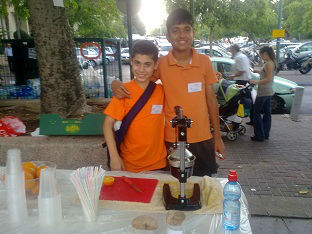
In the picture, Tomer and Ohad, the young entrepreneurs
Tomer and Ohad wore orange shirts with the orange color and attached a tag with their name on the shirt, just like real business owners.
The Initiative: Selling Popcorn
The Young Sellers: 13-year-old Geffen, 10-year-old Nufar, 9.5-year-old Shaked, and 13.5-year-old Zohar
Shaked and Nofer were looking for what to sell to make money. They talked to Geffen and Zohar and convinced them to join them.
After thinking together, they came up with the idea: selling popcorn to neighborhood residents in the mall complex.
The entrepreneurial girls made the popcorn themselves, and to attract customers, Nufar made chocolate balls, and Zohar and Geffen purchased drinking bottles.
The girls said, "We didn't know what price to sell, so when we started, we asked a potential customer, 'How much are you willing to pay?' And so, we set the price."
To the question: "Is your venture successful?" They respond: "Although we earned a lot of money, we also manage to spend it all."

The Initiative: Nail Neutering Stand
The Venture Owners: Two 13-year-old girls from Ramat Gan
The two girls opened a grooming booth to apply nail polish for other girls.
To do this, they purchased nail polishes in a variety of colors, made a sign, and set up shop in a crowded area.
As you can see in the price list, they make a distinction between transparent and colored nail polish.
The cost to apply colored nail polish to both hands is 7 NIS, and clear polish for both hands is 4 NIS.
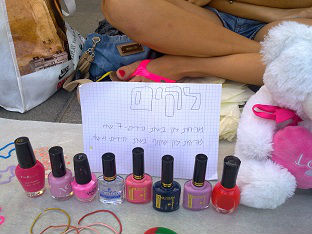
Read more about initiative ideas by children who participated in the Entrepreneurship for Kids Program on pages 1 and 2. As well as in additional children's ventures that were implemented.